The document discusses the balanced scorecard (BSC), a strategic management tool developed by Kaplan and Norton, emphasizing its importance in aligning organizational goals across four perspectives: financial, customer, internal business processes, and learning/growth. It highlights the necessity of cultural change, leadership commitment, and accountability for successful implementation of BSC in organizations, particularly using case studies from Australian companies. The findings suggest that a tailored approach is critical, as different organizations will have varying needs, measures, and strategies to effectively utilize the balanced scorecard.
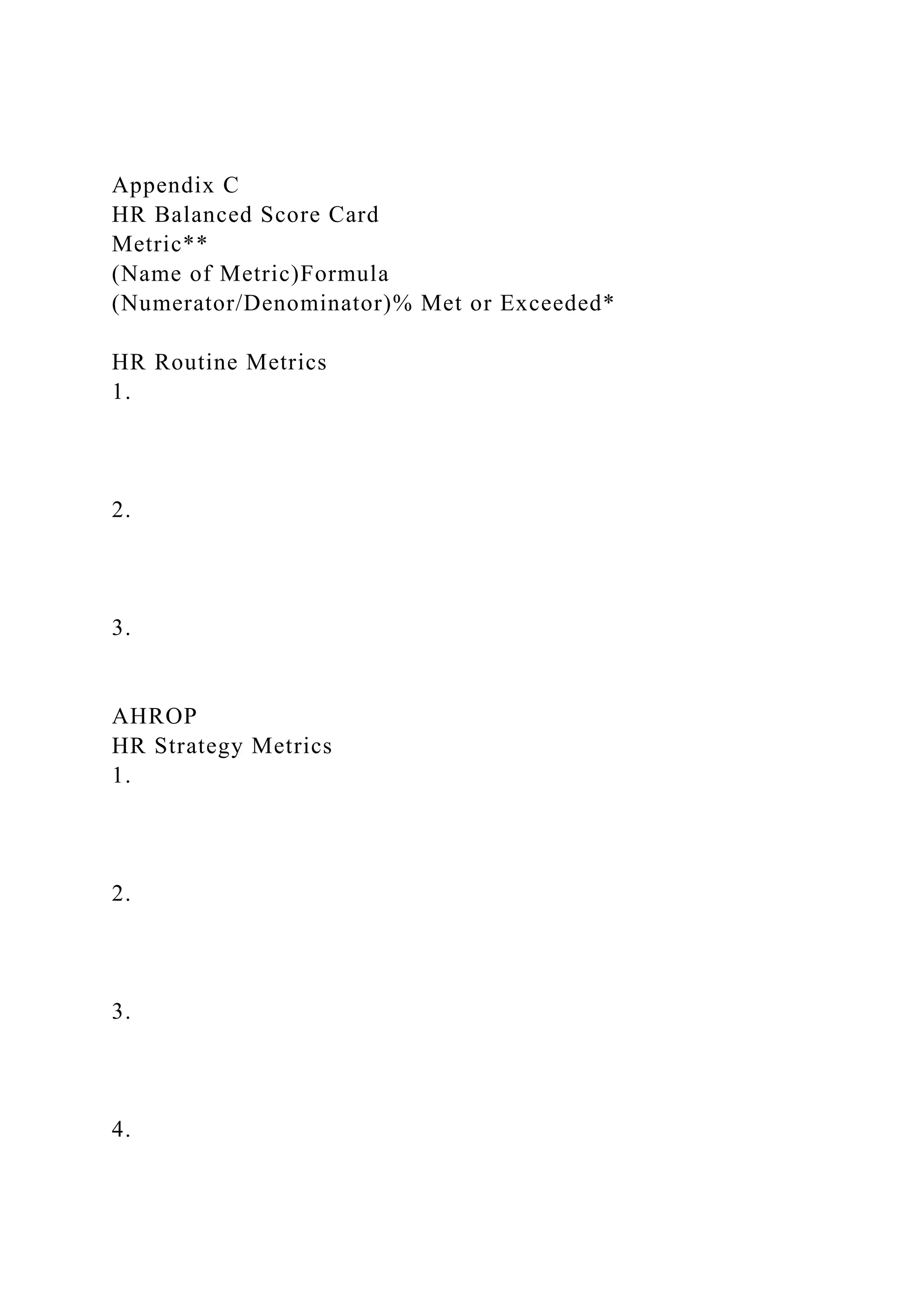
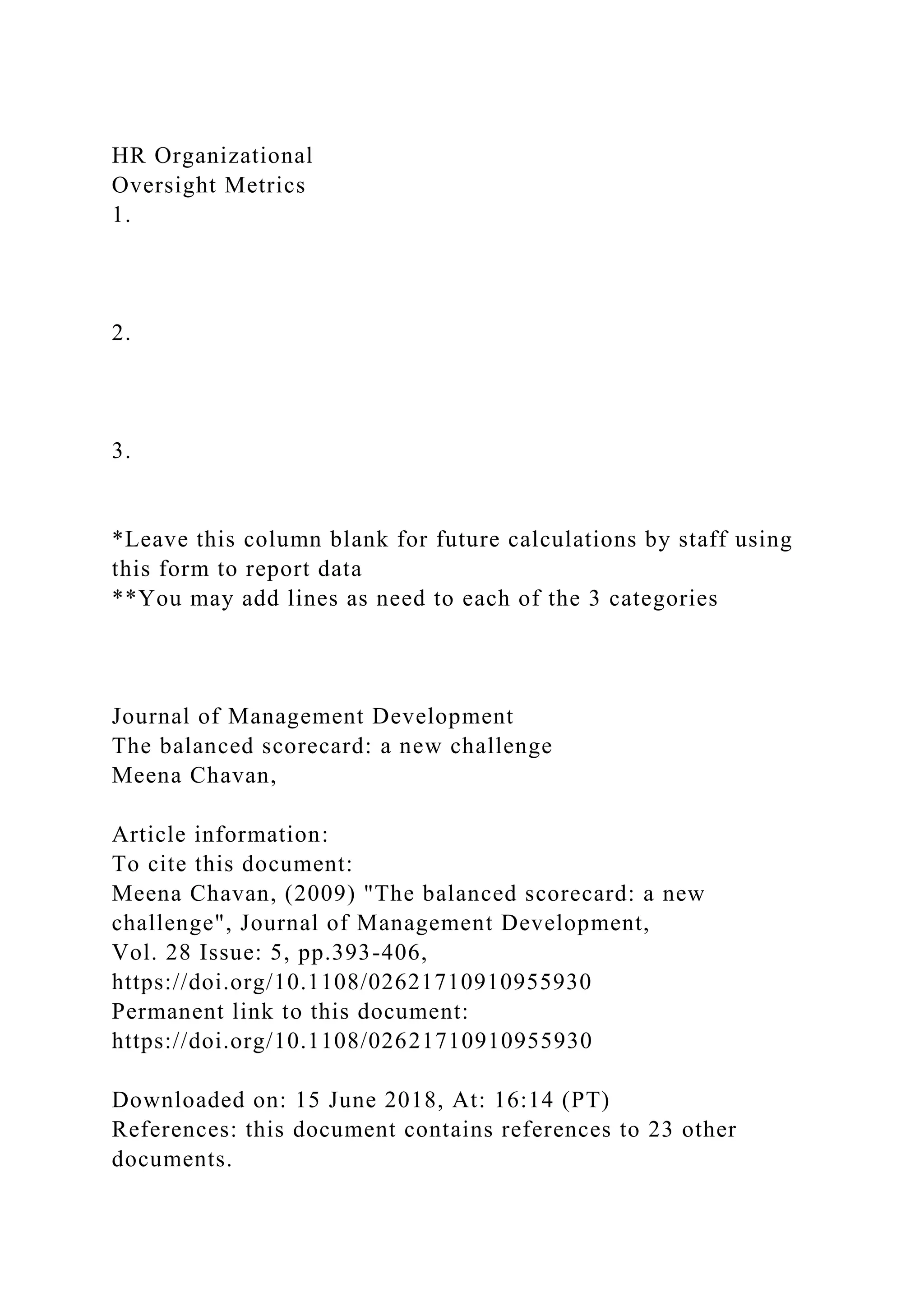
![To copy this document: [email protected]
The fulltext of this document has been downloaded 35909 times
since 2009*
Users who downloaded this article also downloaded:
(2004),"Third-generation balanced scorecard: evolution of an
effective strategic control tool", International
Journal of Productivity and Performance Management, Vol. 53
Iss 7 pp. 611-623 <a href="https://
doi.org/10.1108/17410400410561231">https://doi.org/10.1108/1
7410400410561231</a>
(2012),"The politics of the balanced scorecard", Journal of
Accounting & Organizational
Change, Vol. 8 Iss 4 pp. 475-489 <a
href="https://doi.org/10.1108/18325911211273482">https://
doi.org/10.1108/18325911211273482</a>
Access to this document was granted through an Emerald
subscription provided by emerald-srm:552352 []
For Authors
If you would like to write for this, or any other Emerald
publication, then please use our Emerald for
Authors service information about how to choose which
publication to write for and submission guidelines
are available for all. Please visit
www.emeraldinsight.com/authors for more information.
About Emerald www.emeraldinsight.com
Emerald is a global publisher linking research and practice to
the benefit of society. The company
manages a portfolio of more than 290 journals and over 2,350
books and book series volumes, as well as
providing an extensive range of online products and additional
customer resources and services.](https://image.slidesharecdn.com/appendixchrbalancedscorecardmetricnameofmetricform-221112092958-230b1875/75/Appendix-CHR-Balanced-Score-CardMetric-Name-of-Metric-Form-docx-3-2048.jpg)
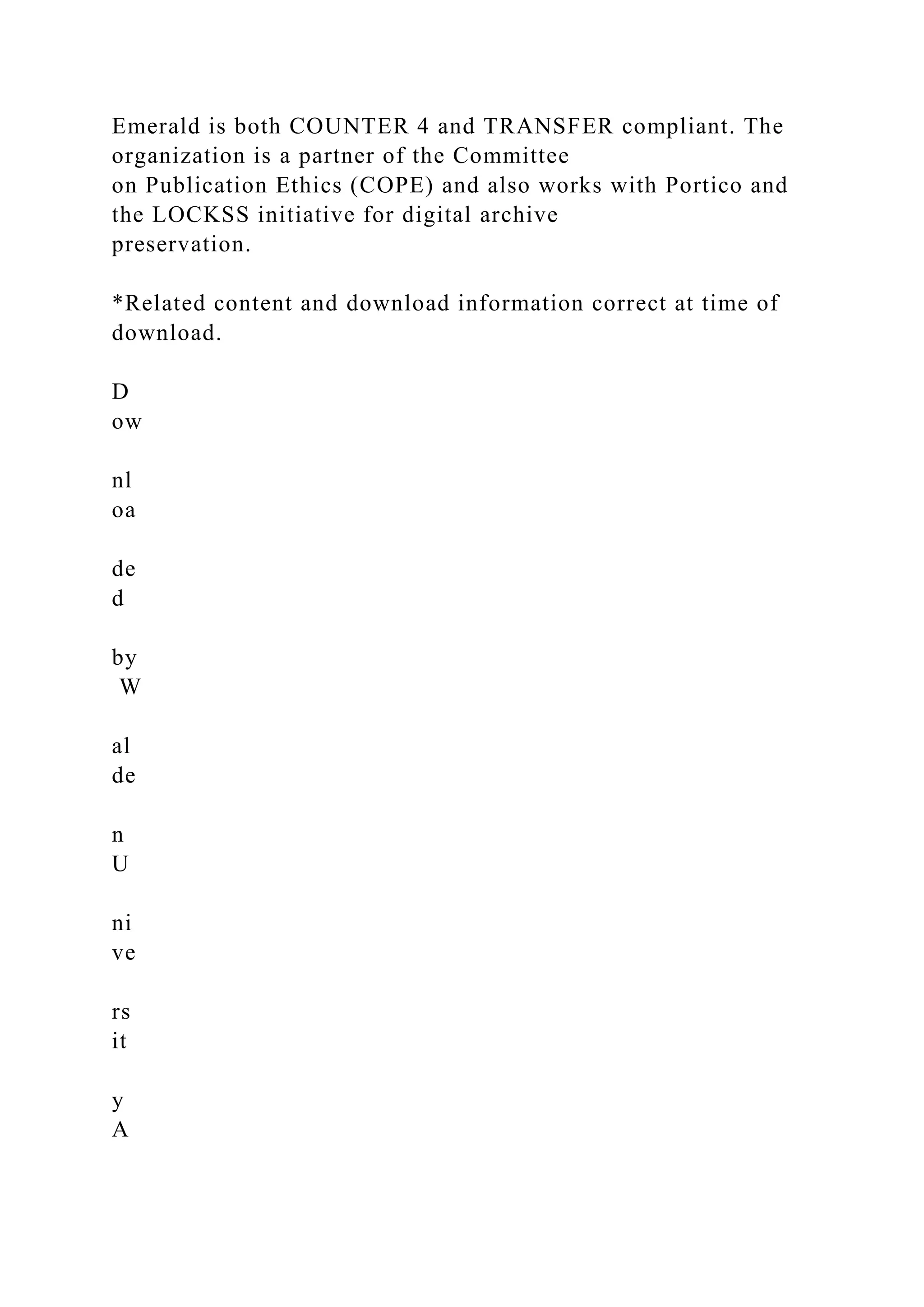
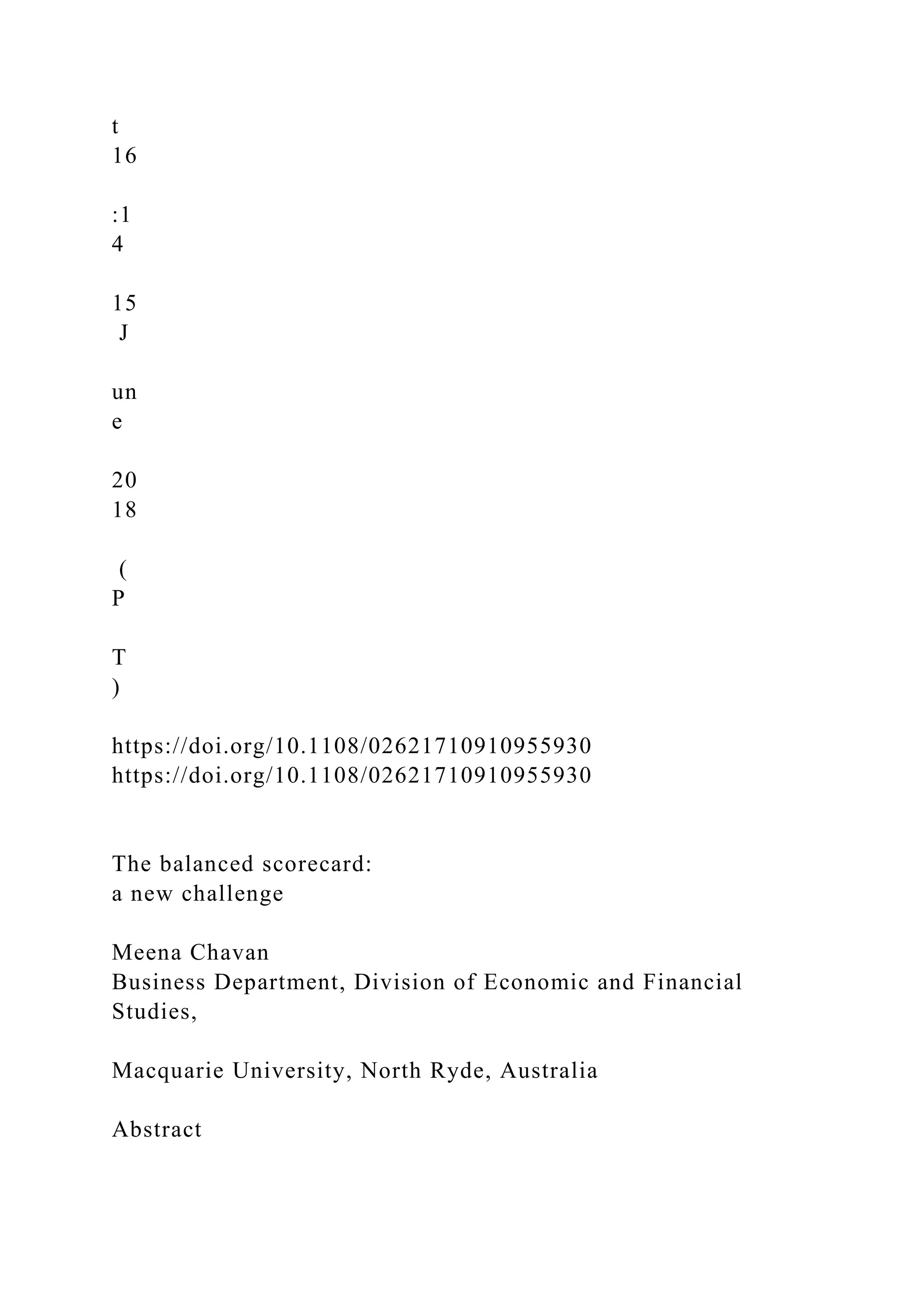
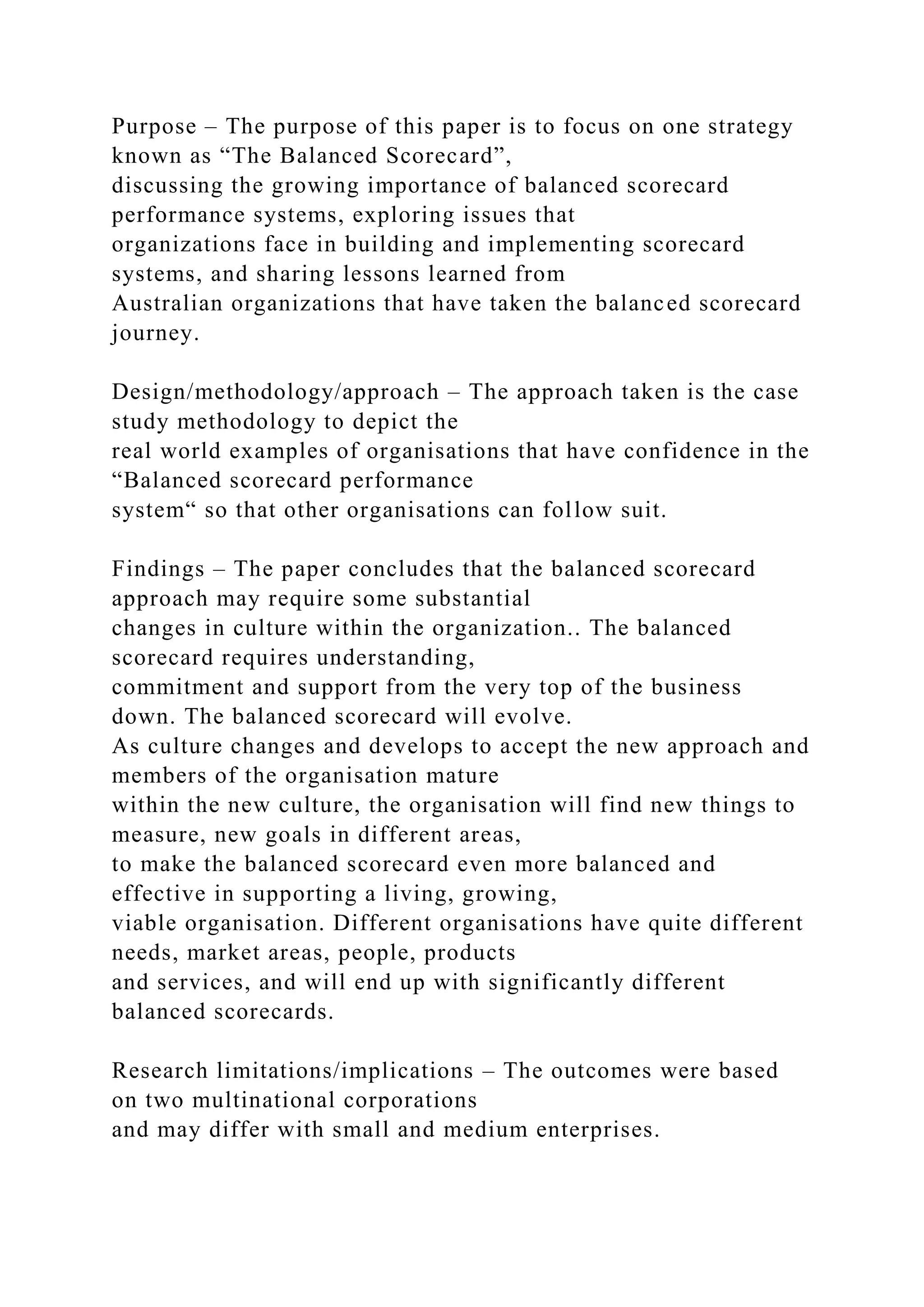

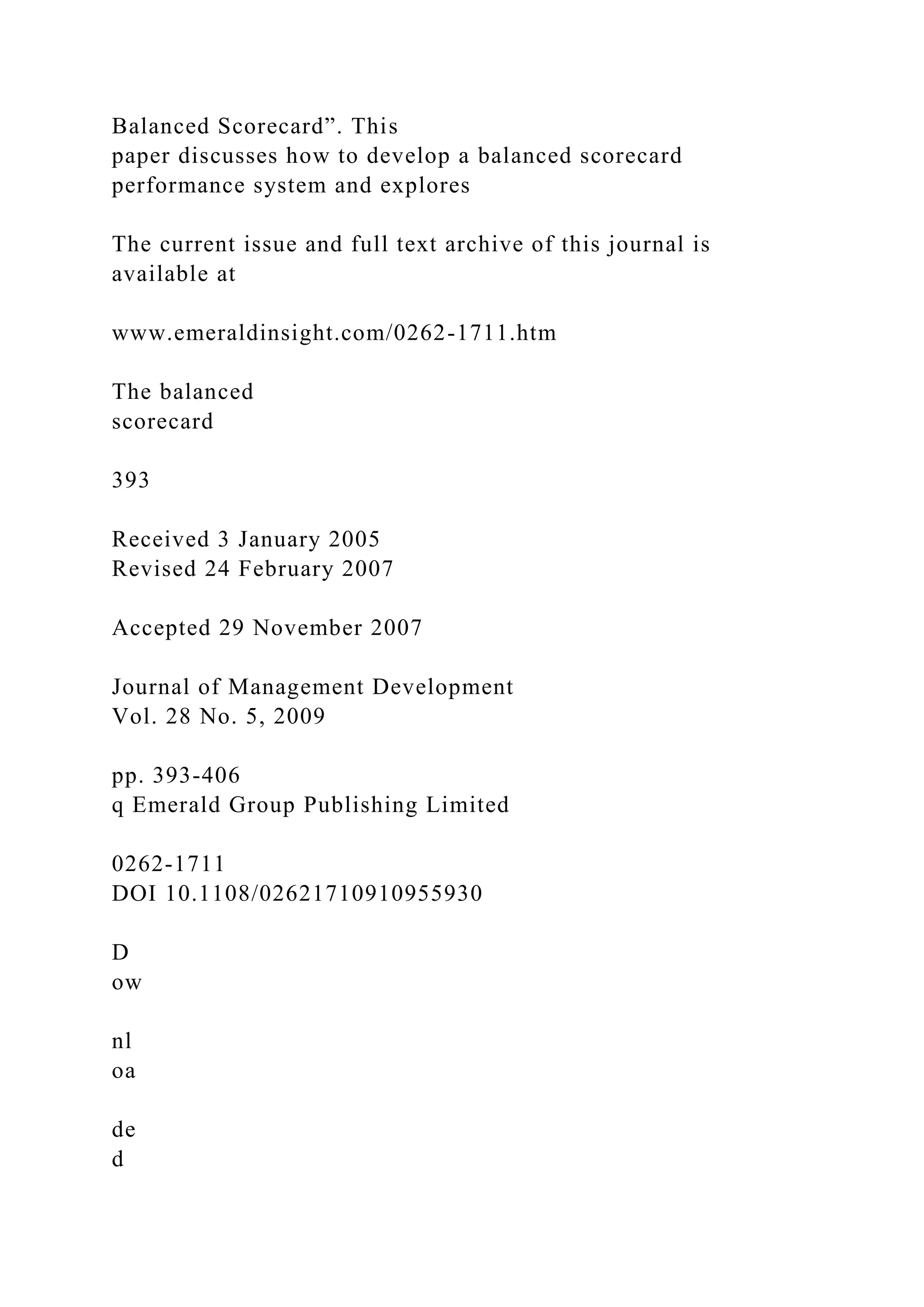

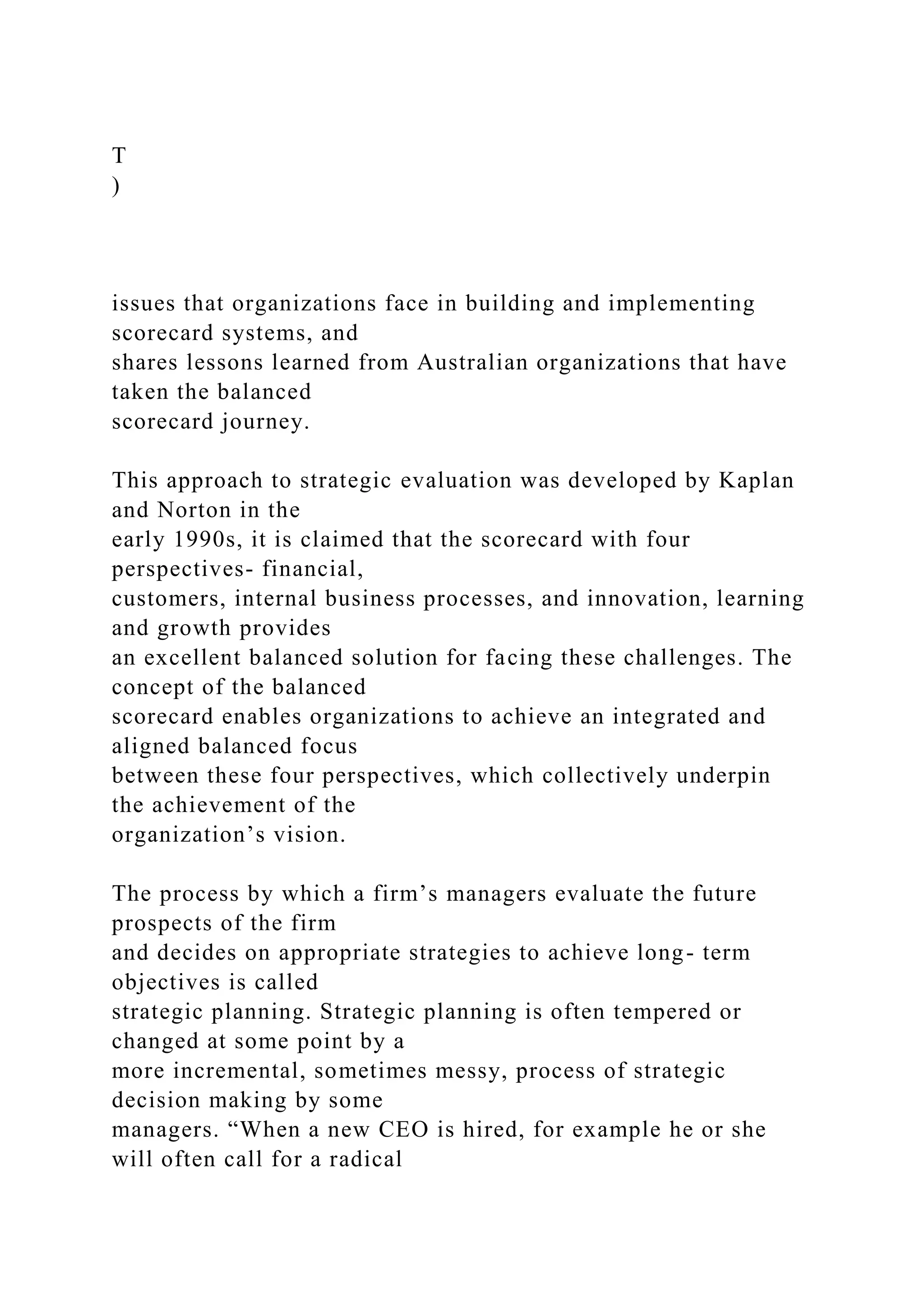

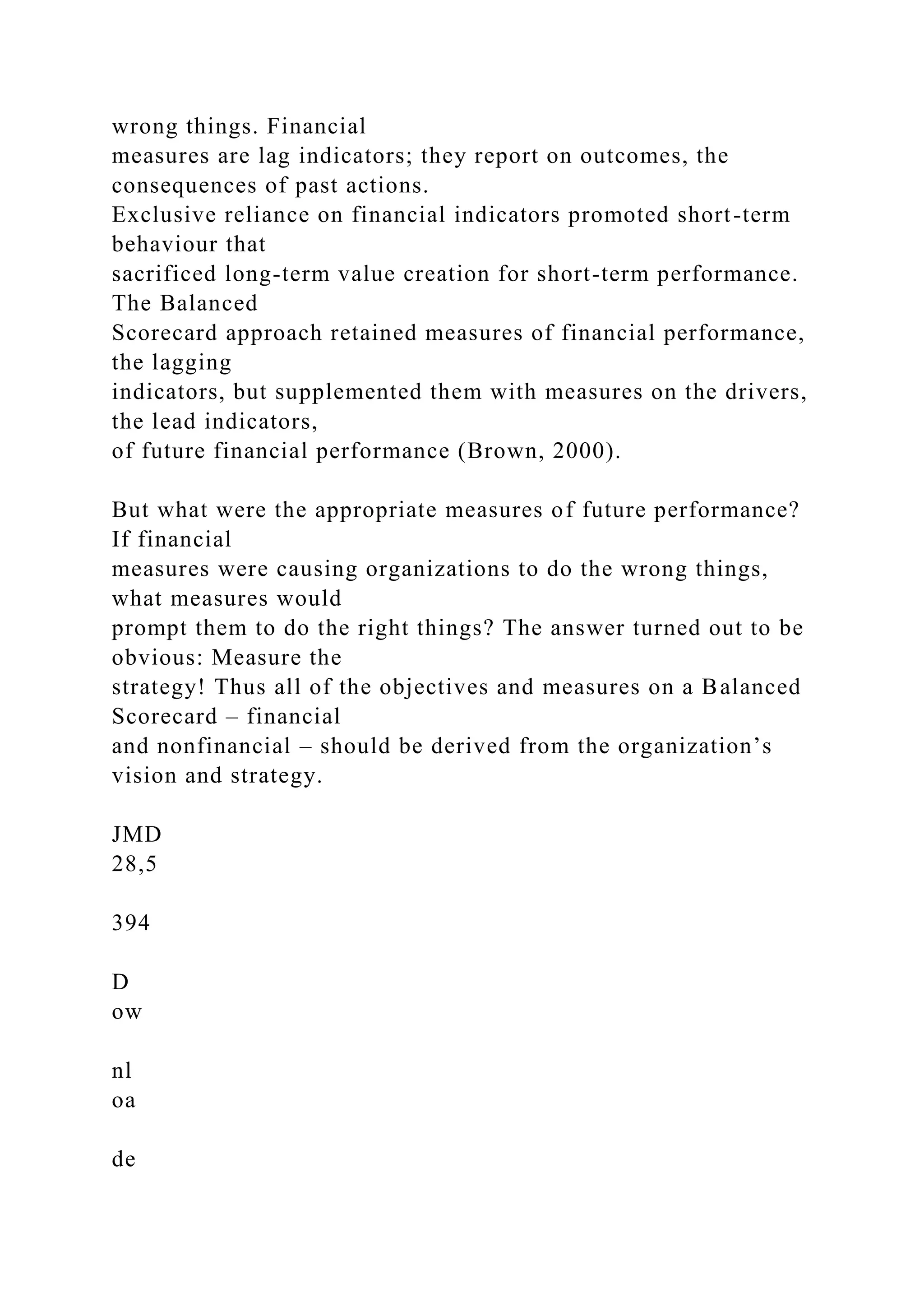

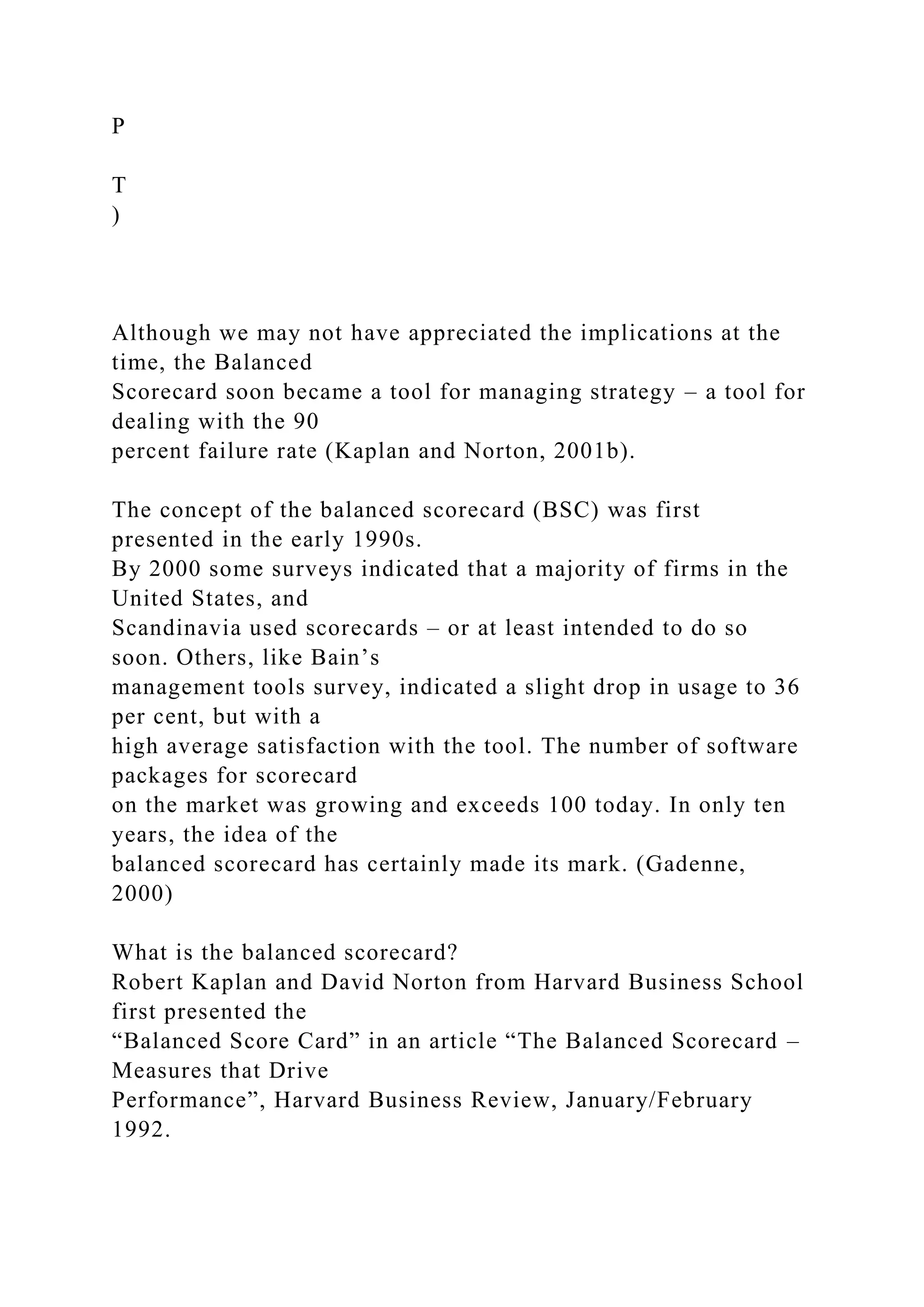
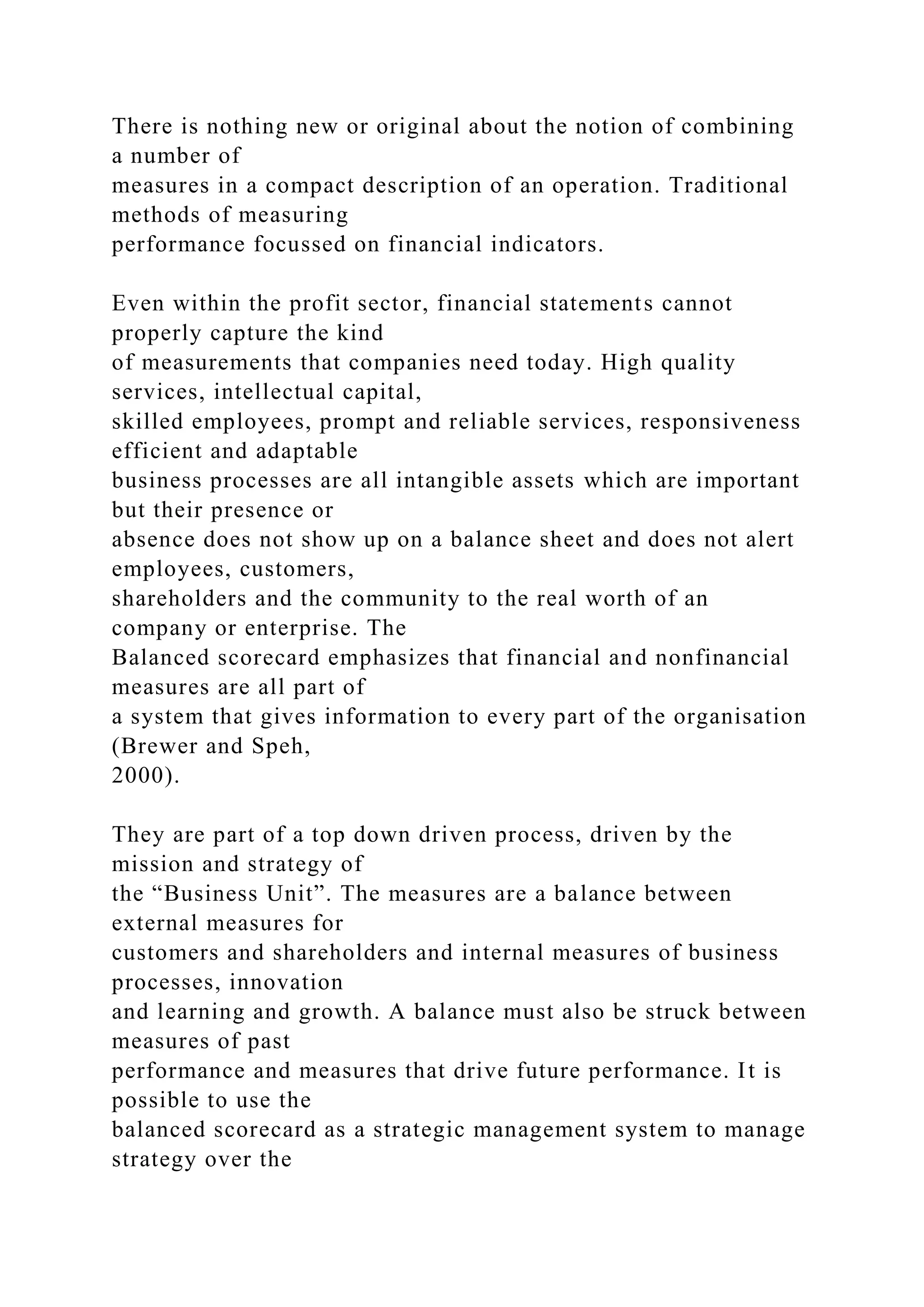

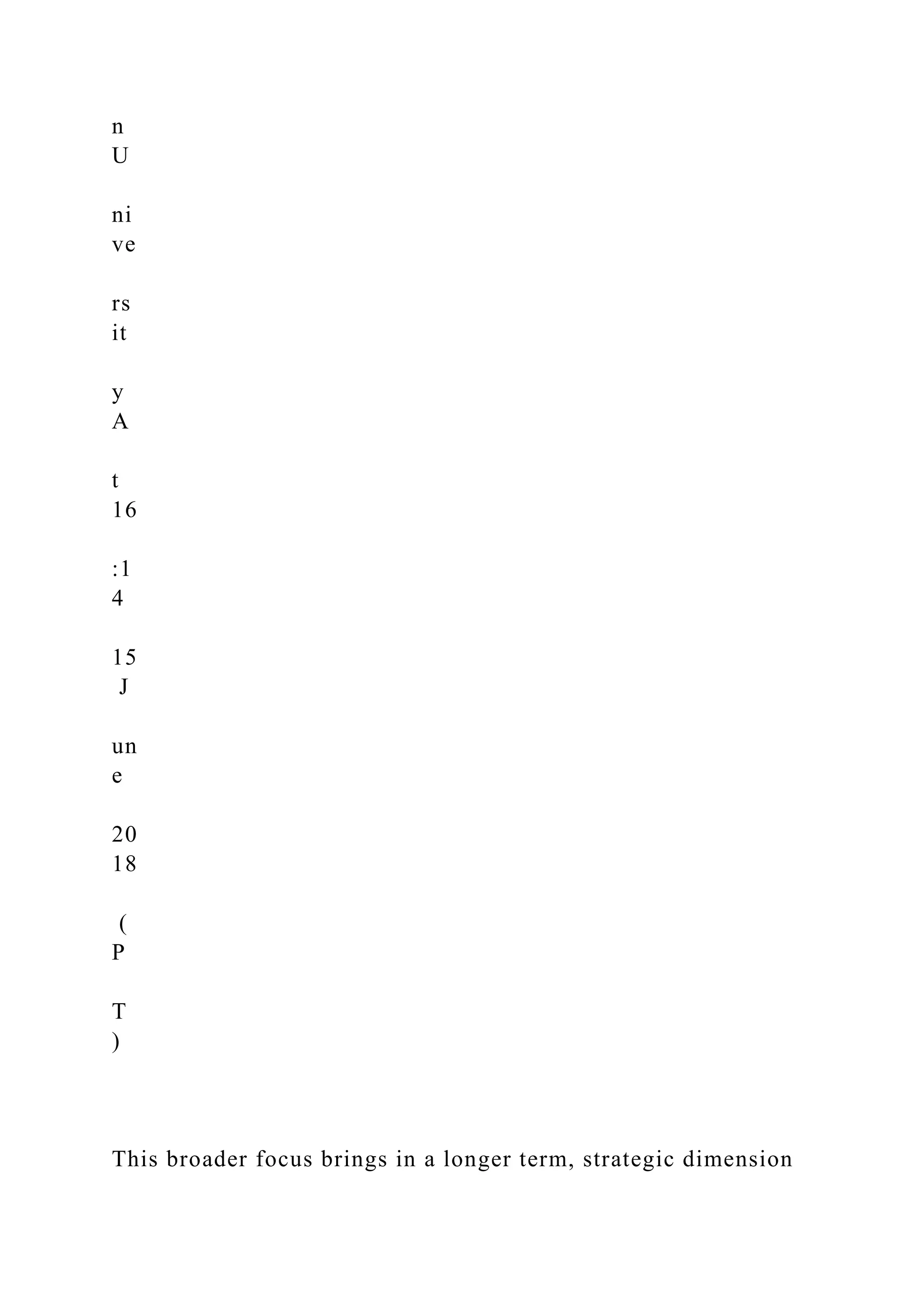

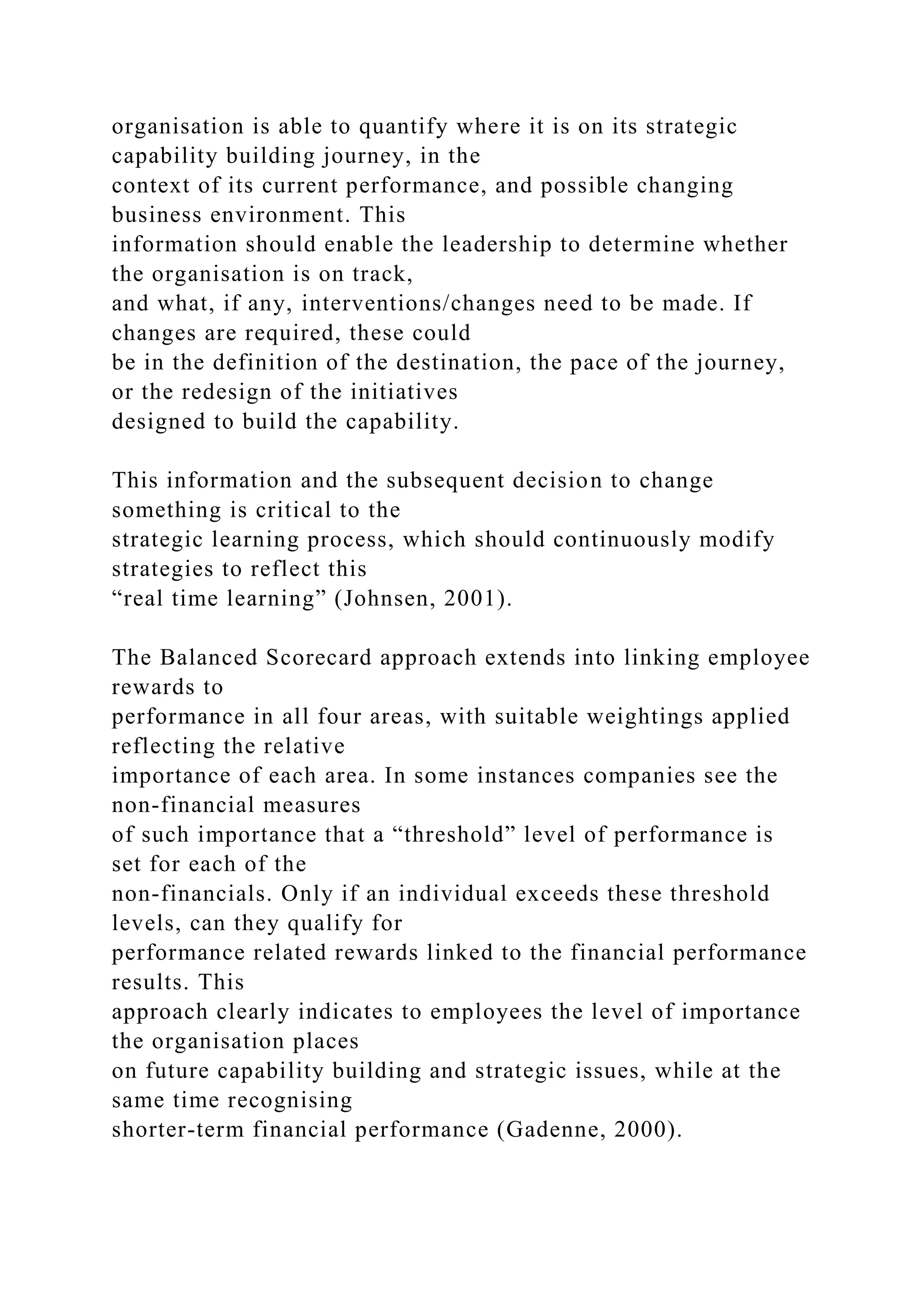
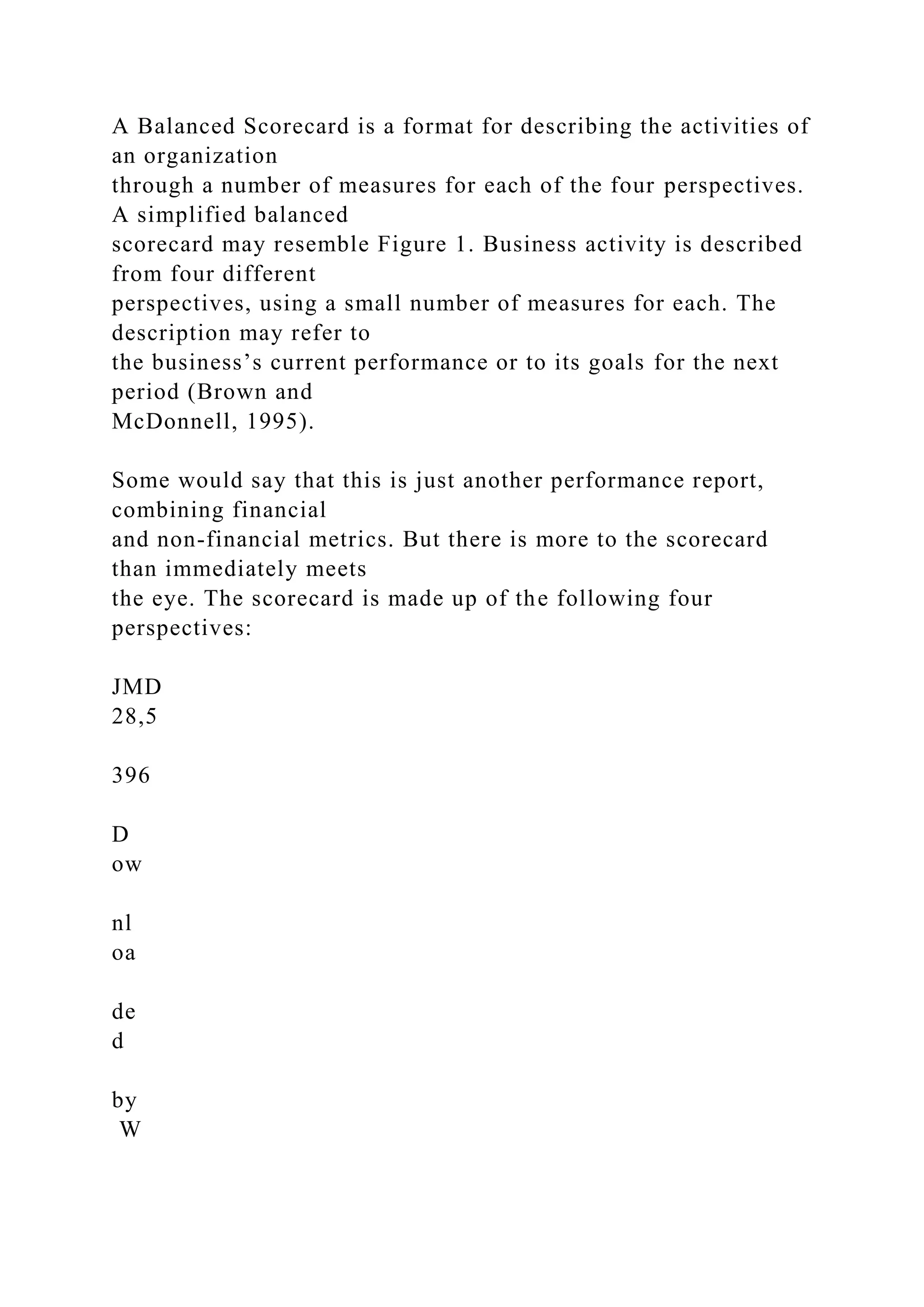

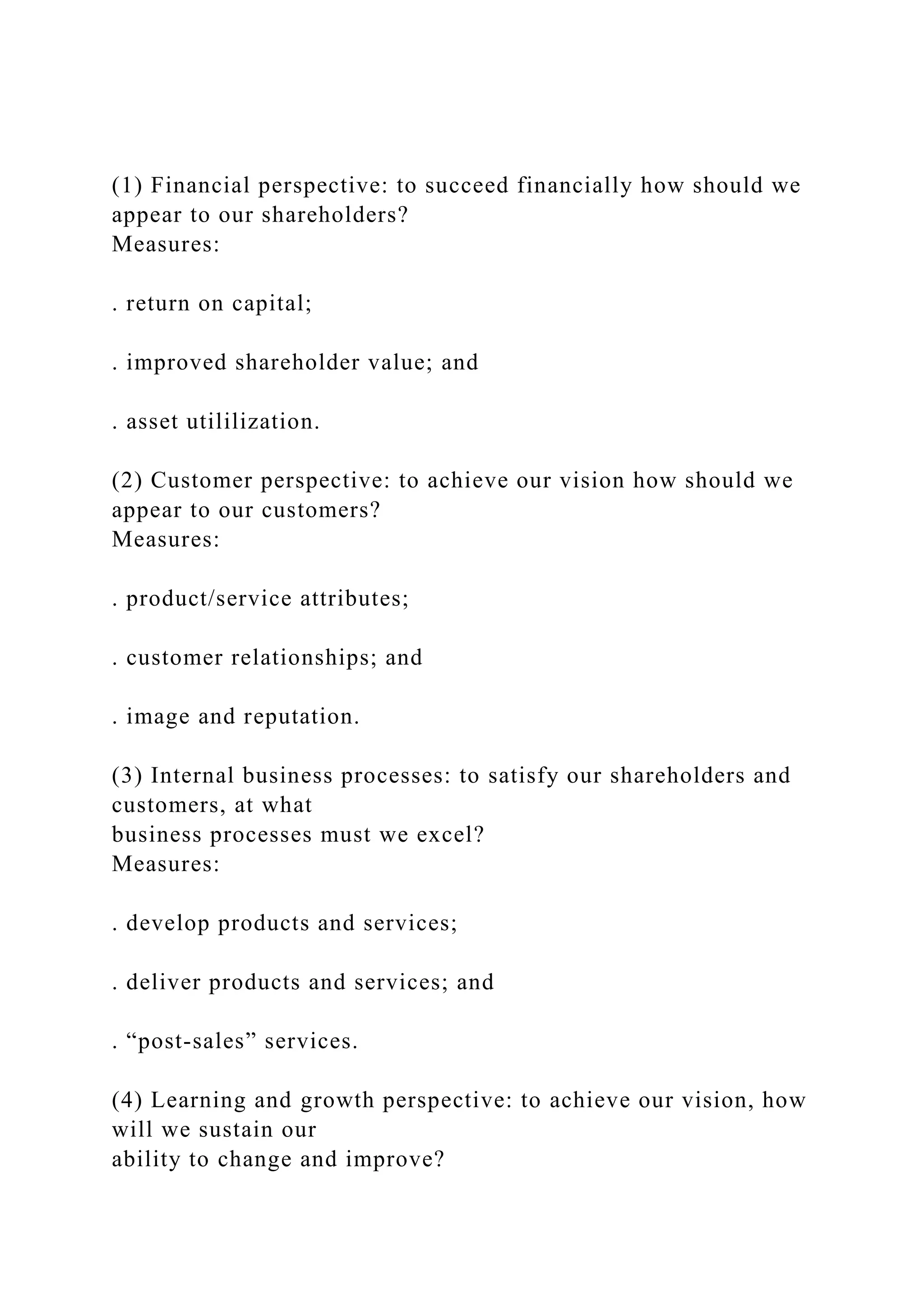
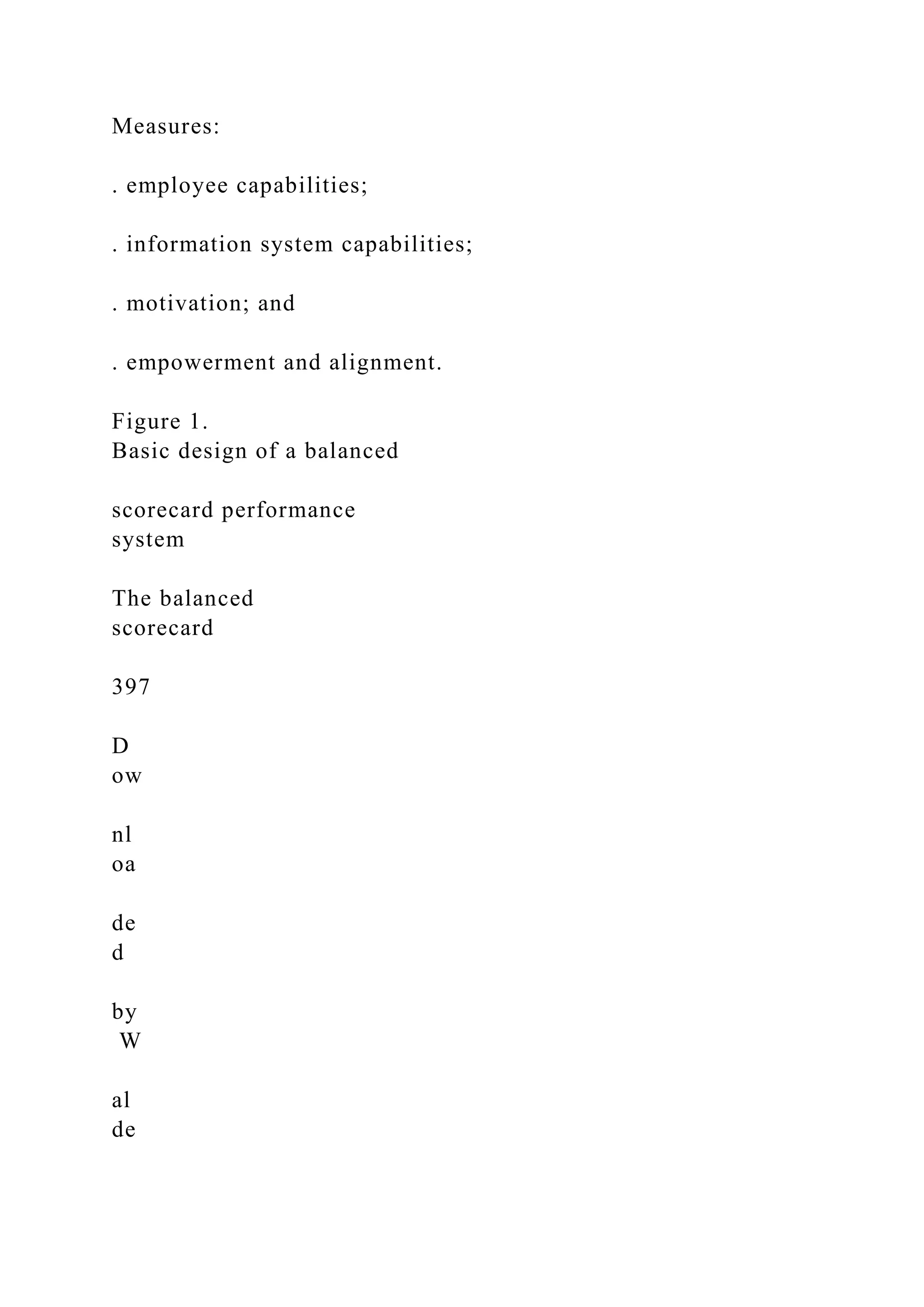
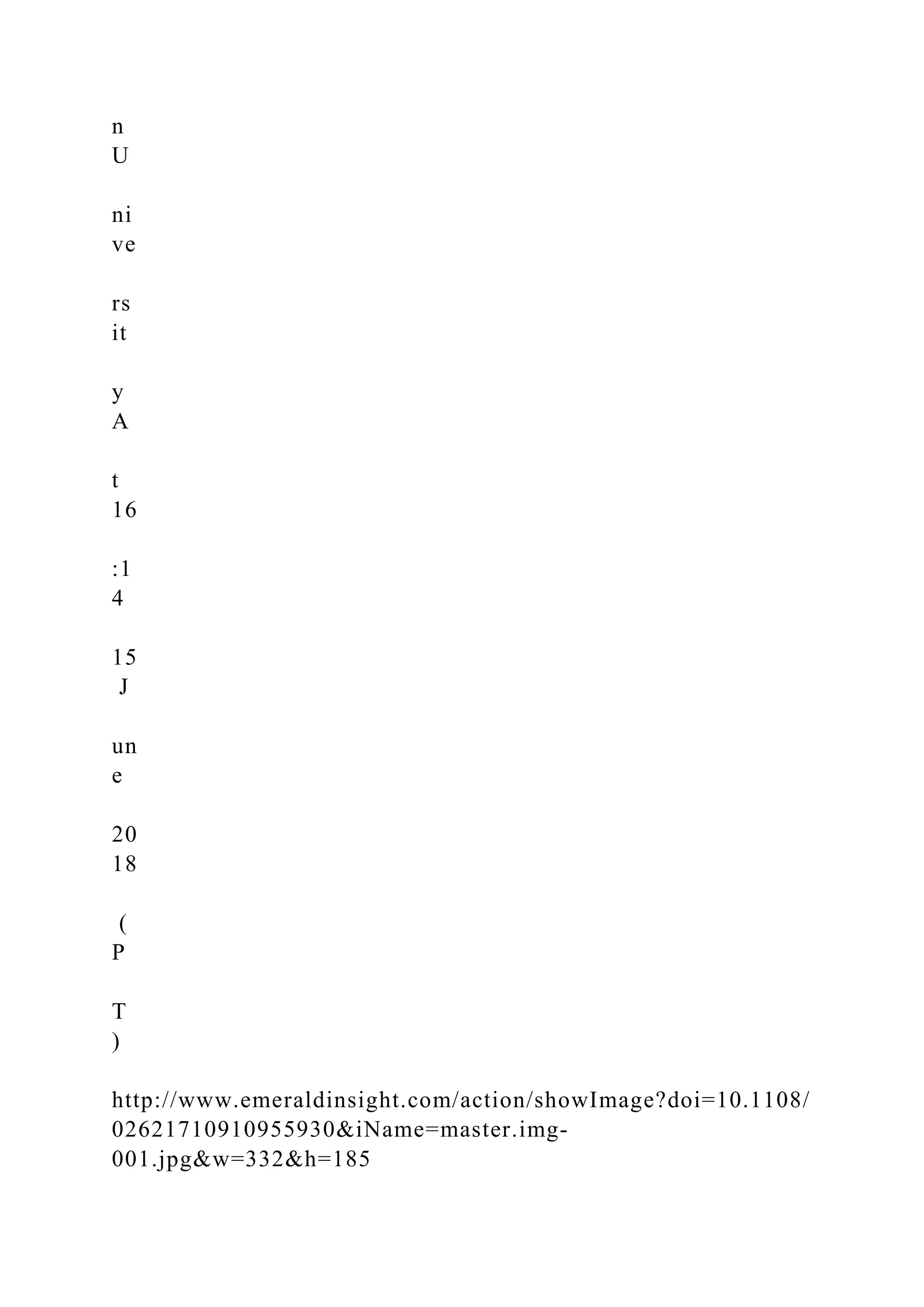
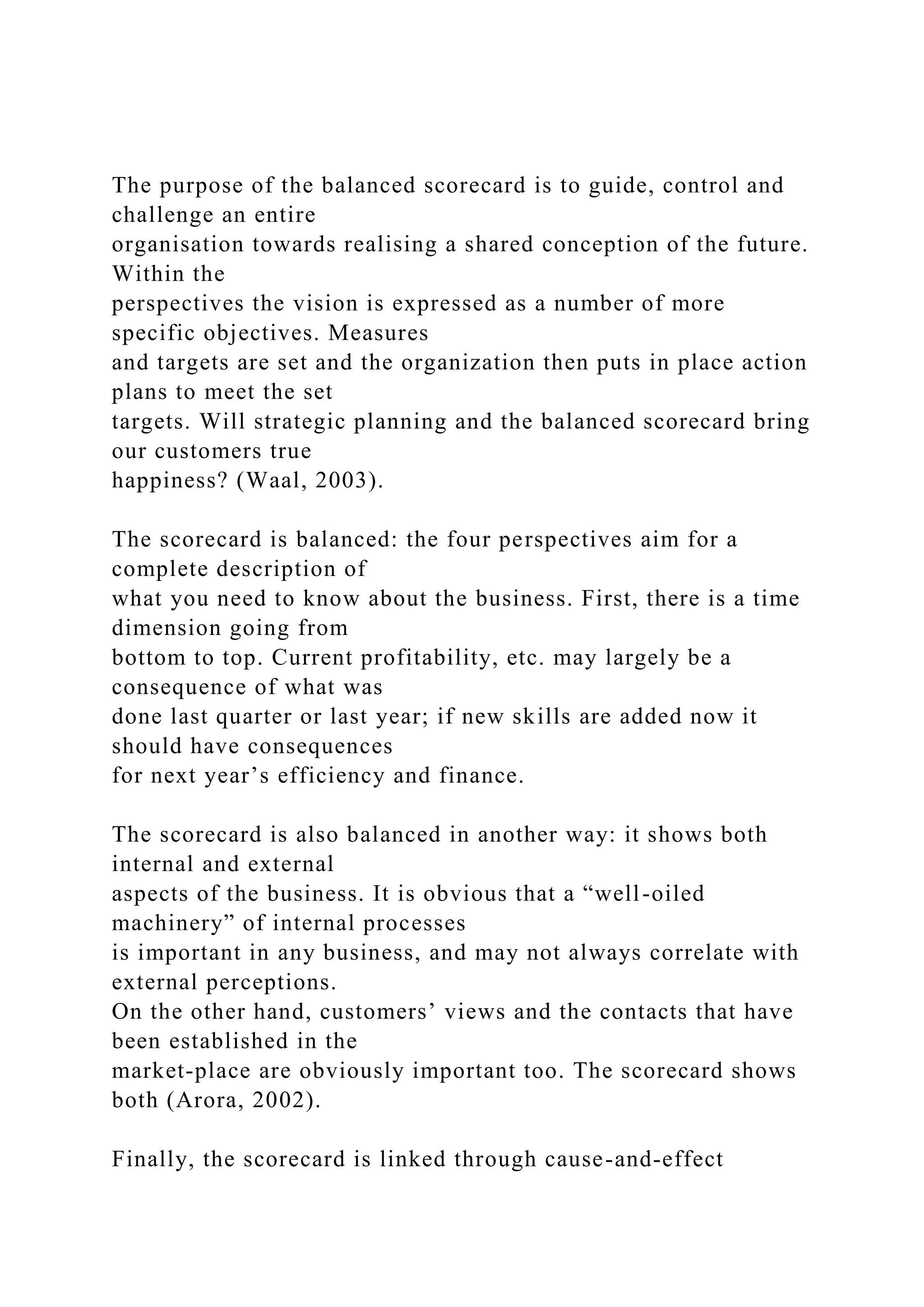
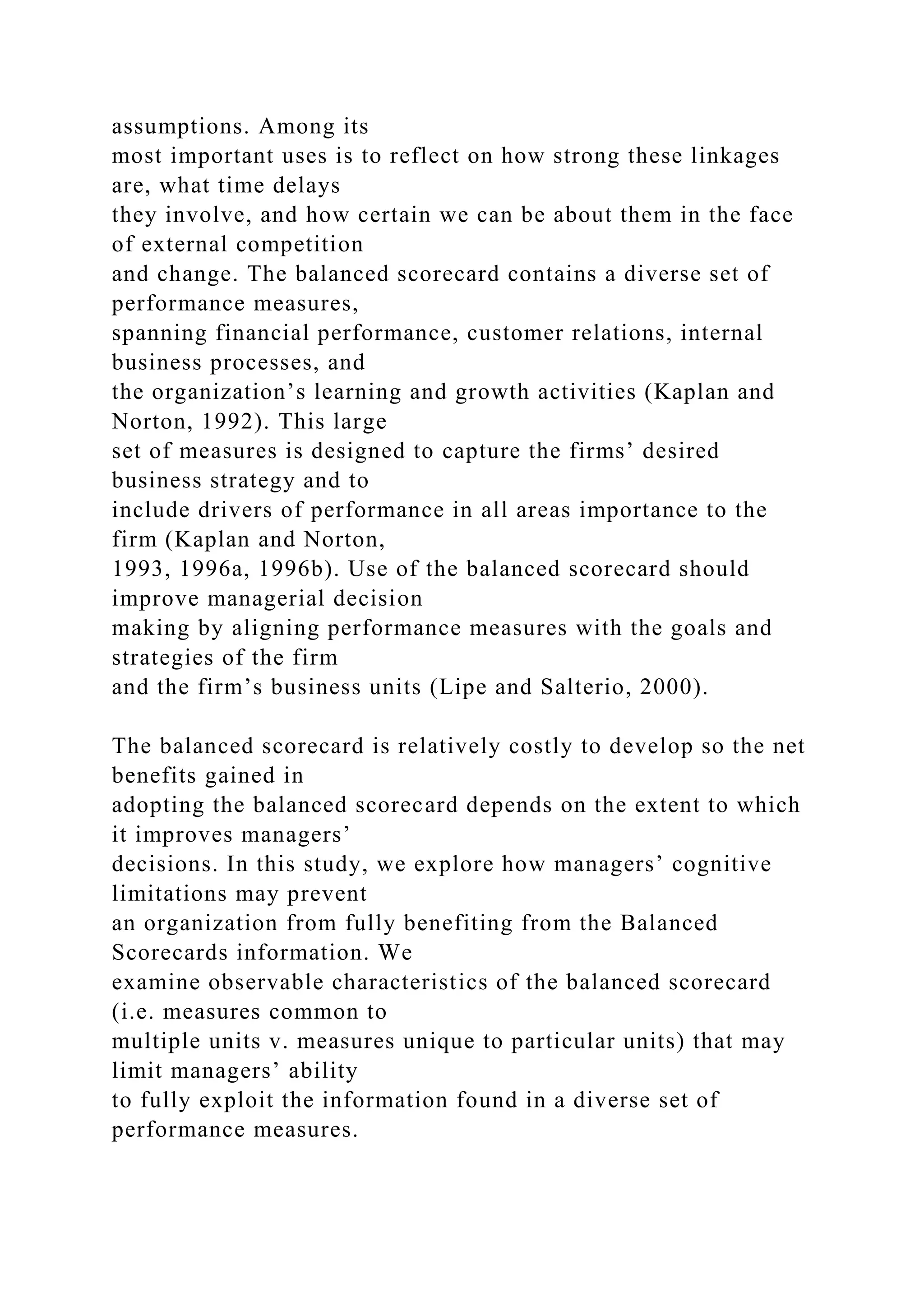
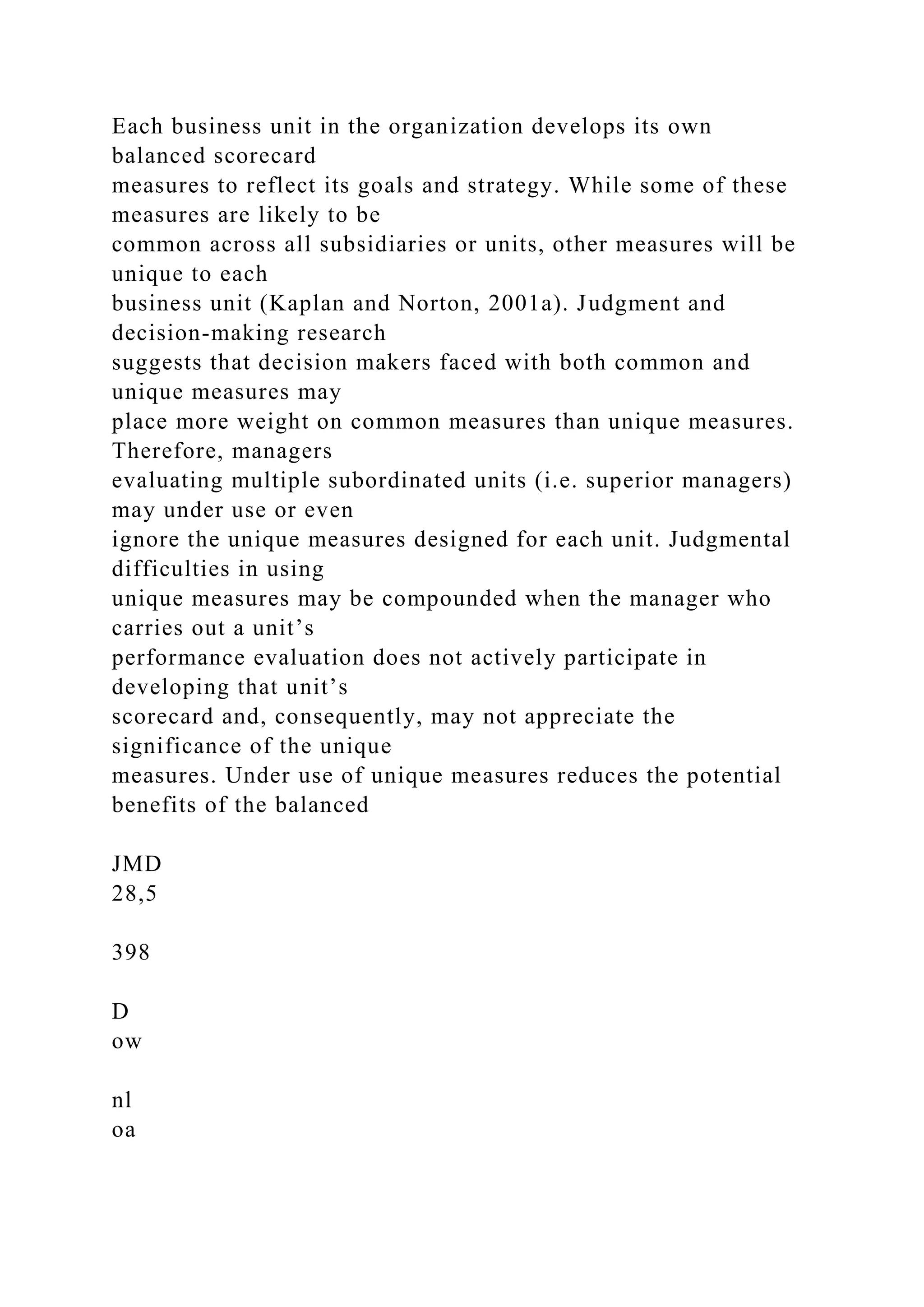


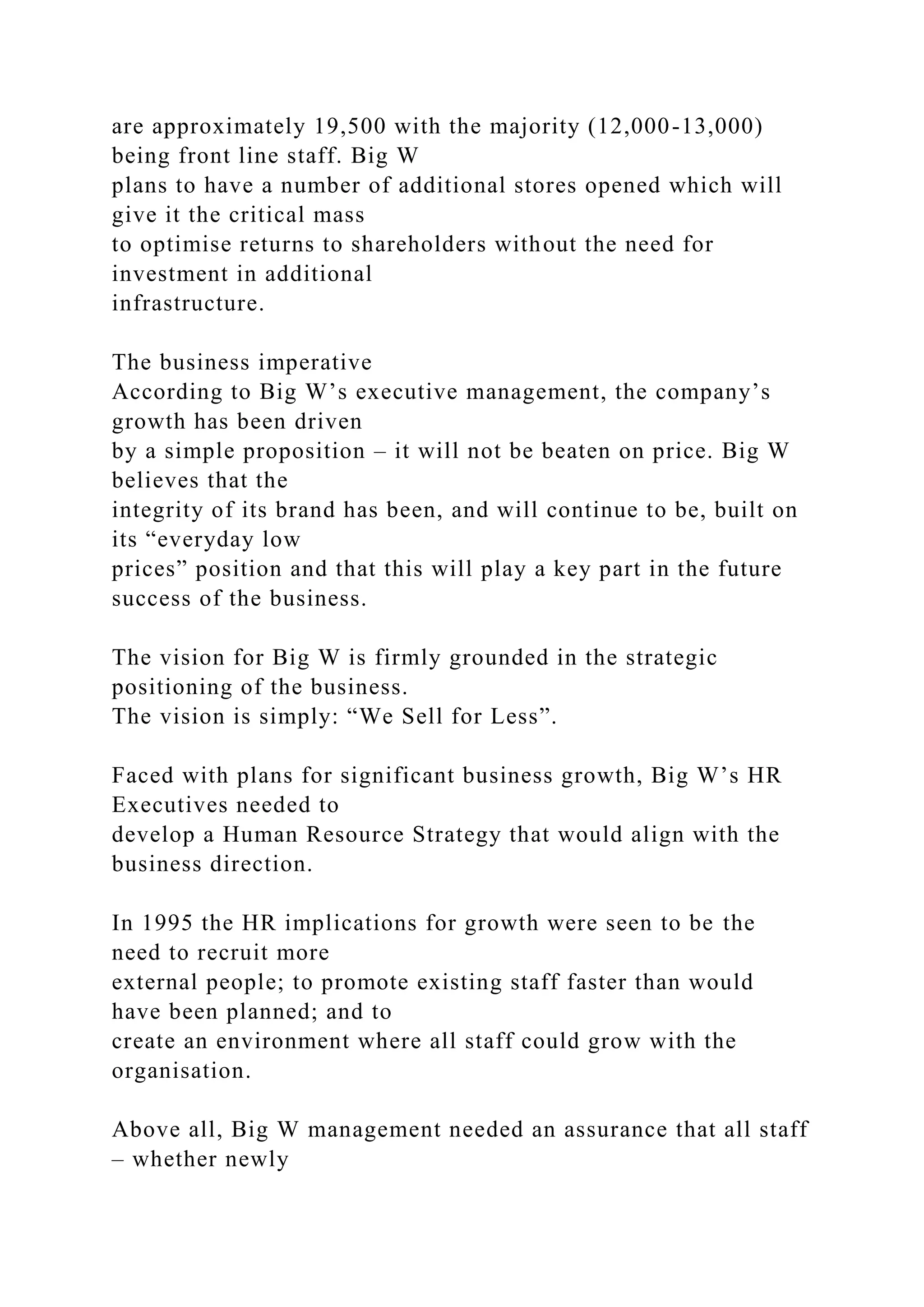
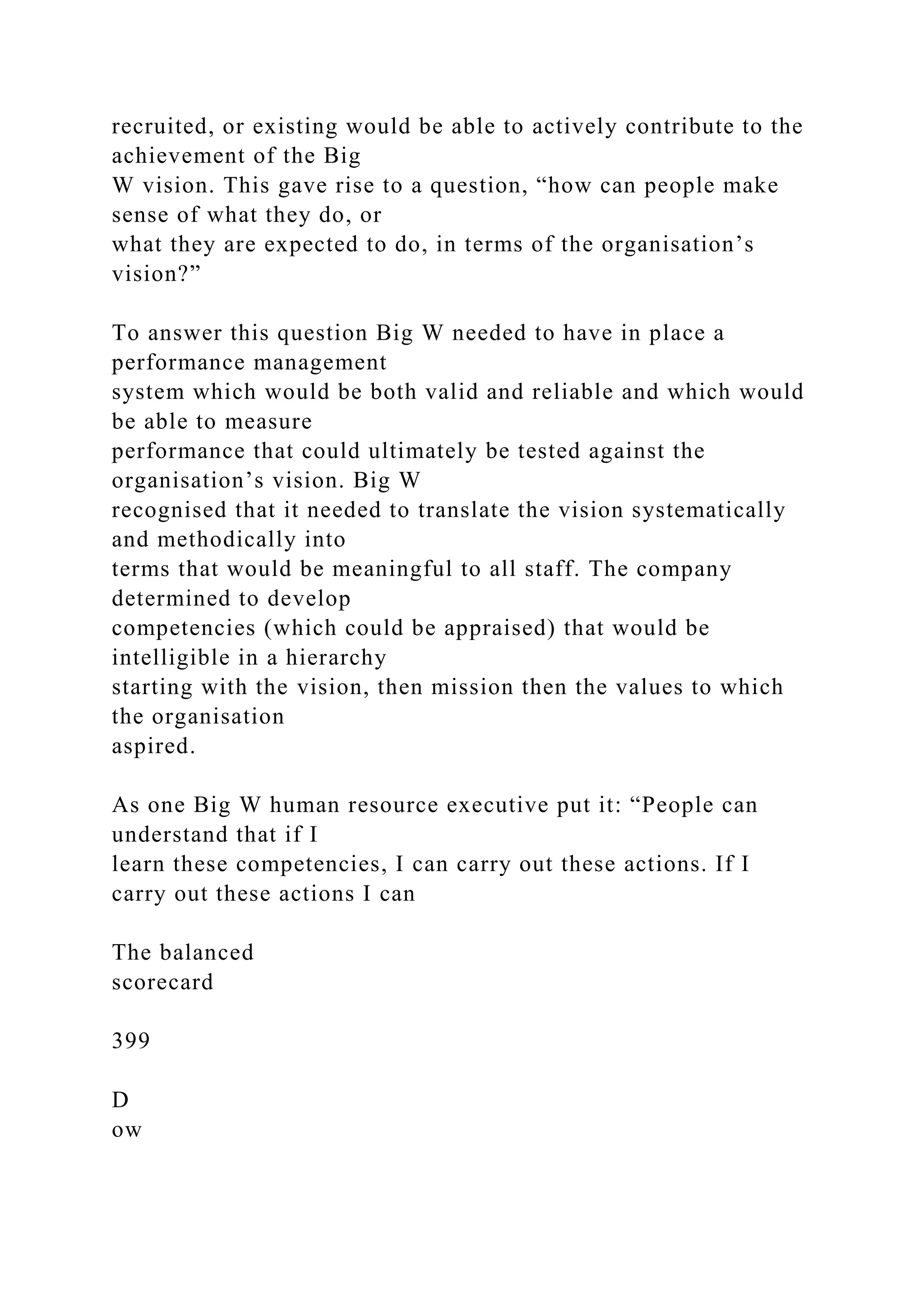

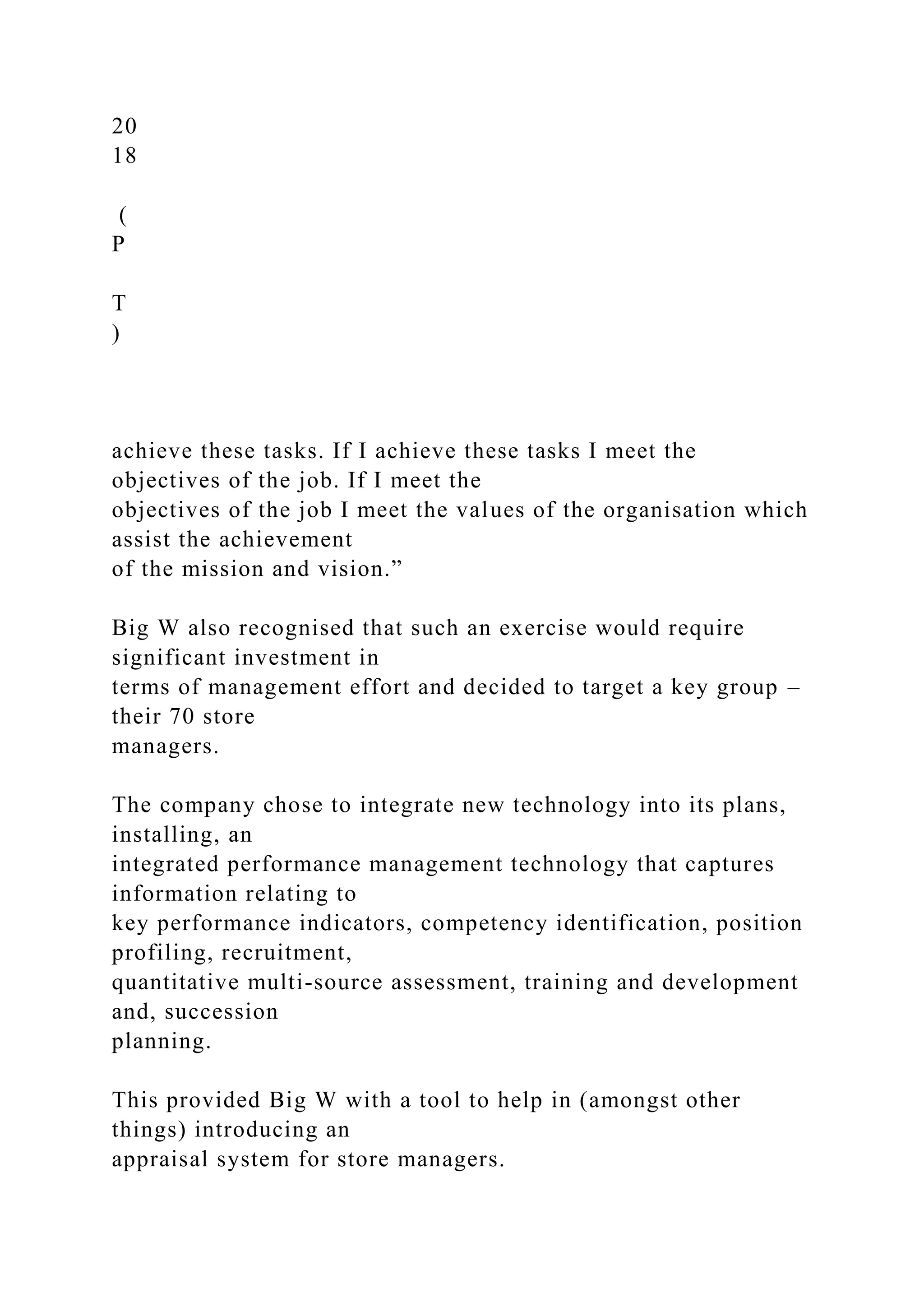
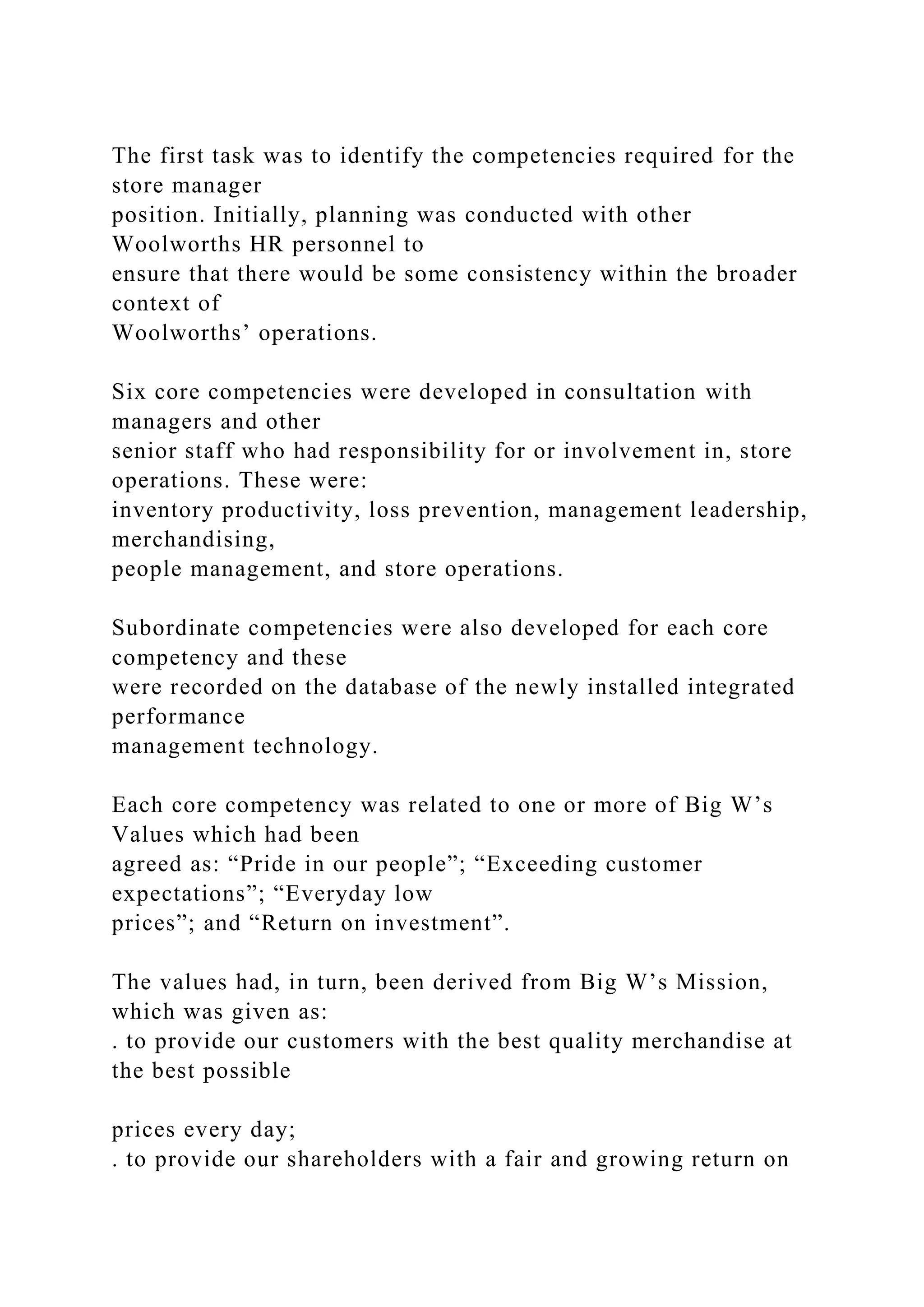
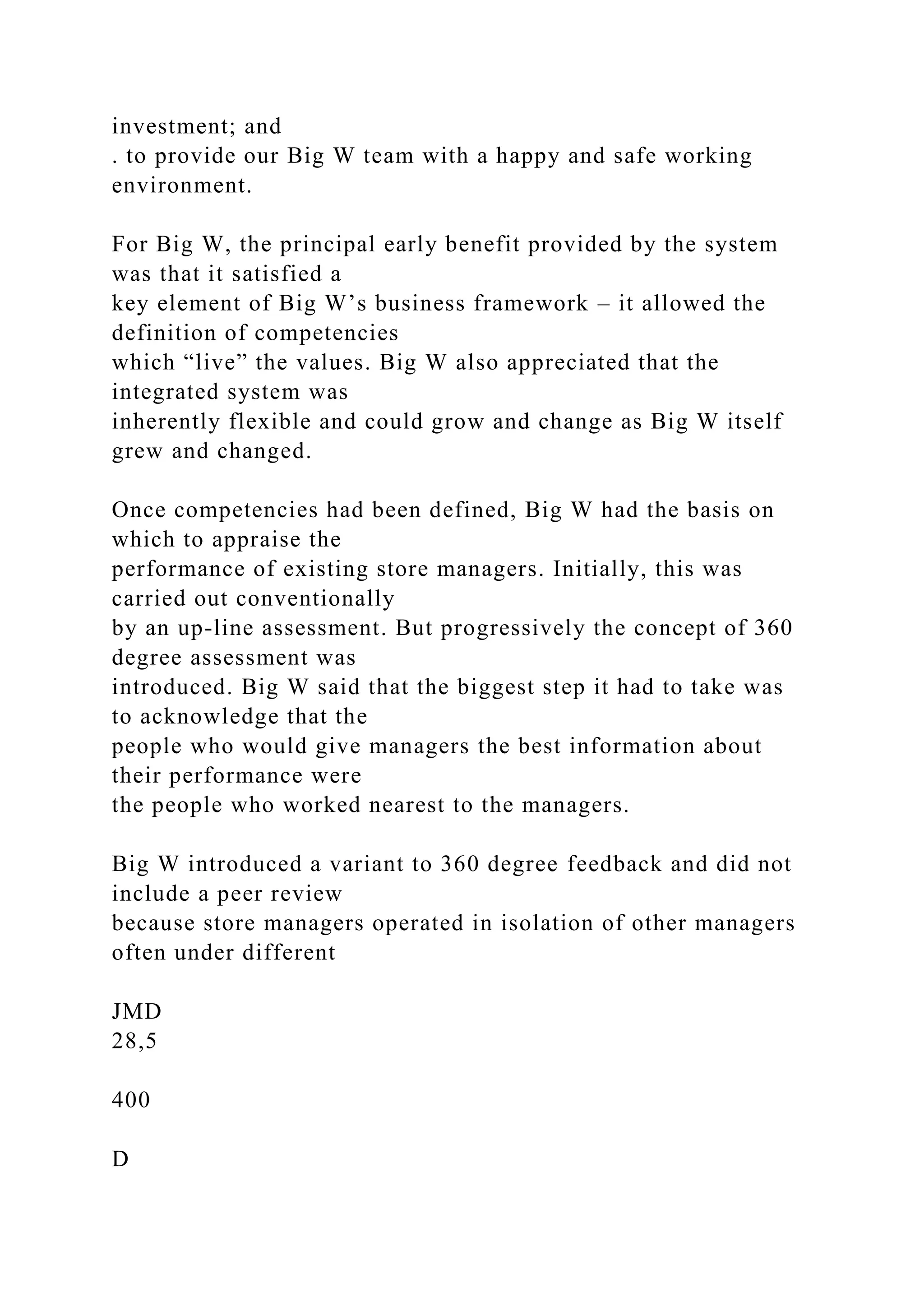

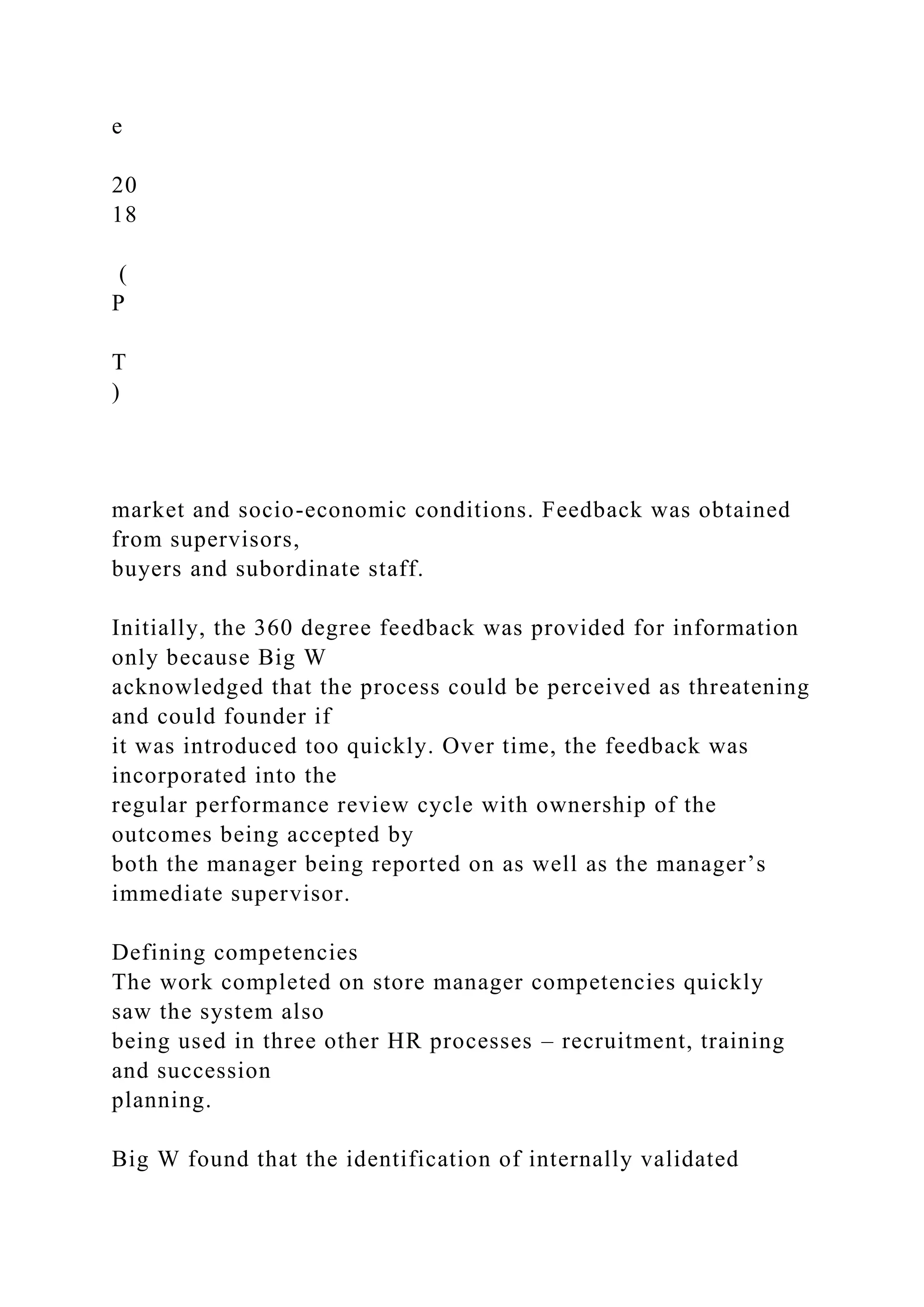

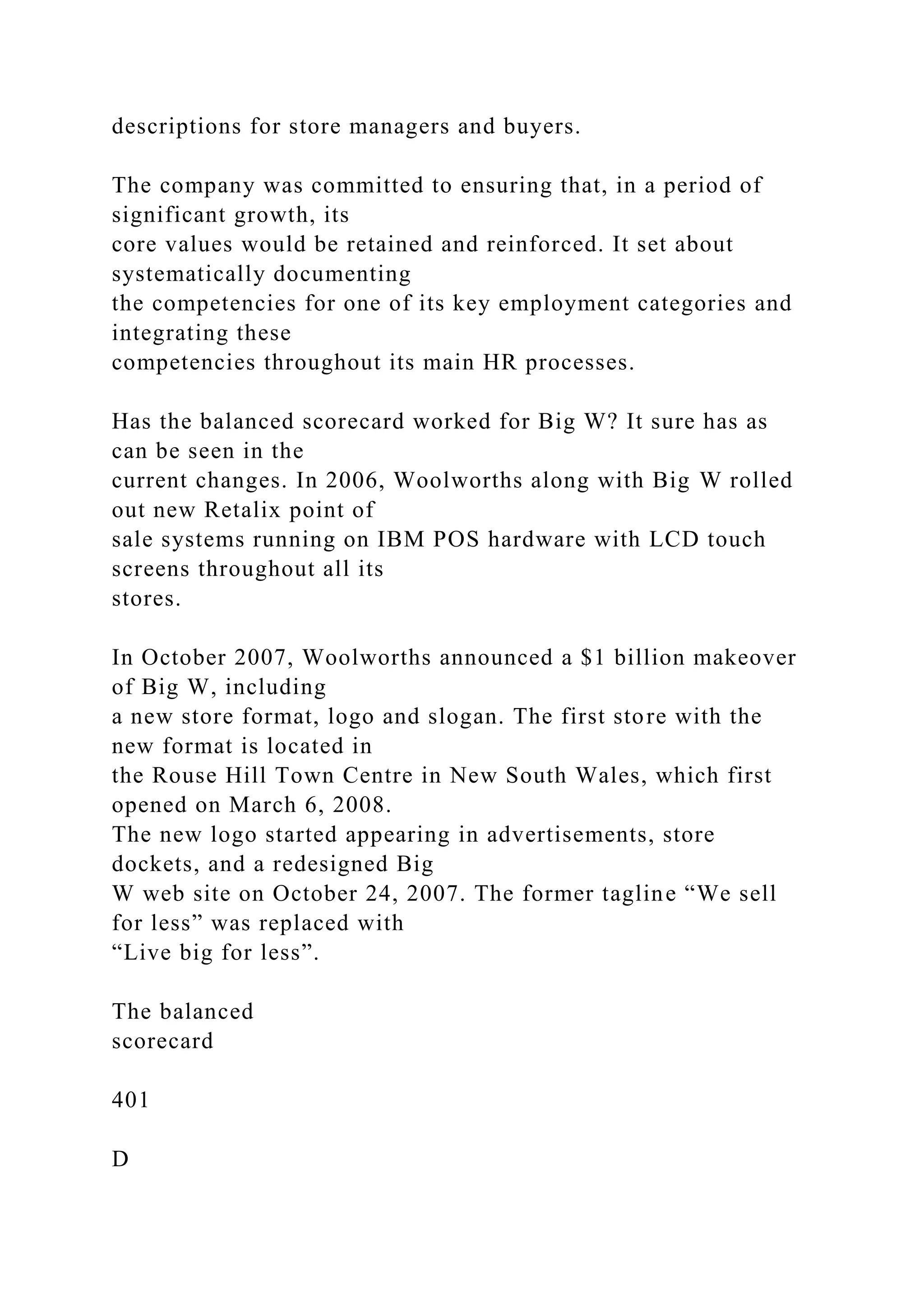

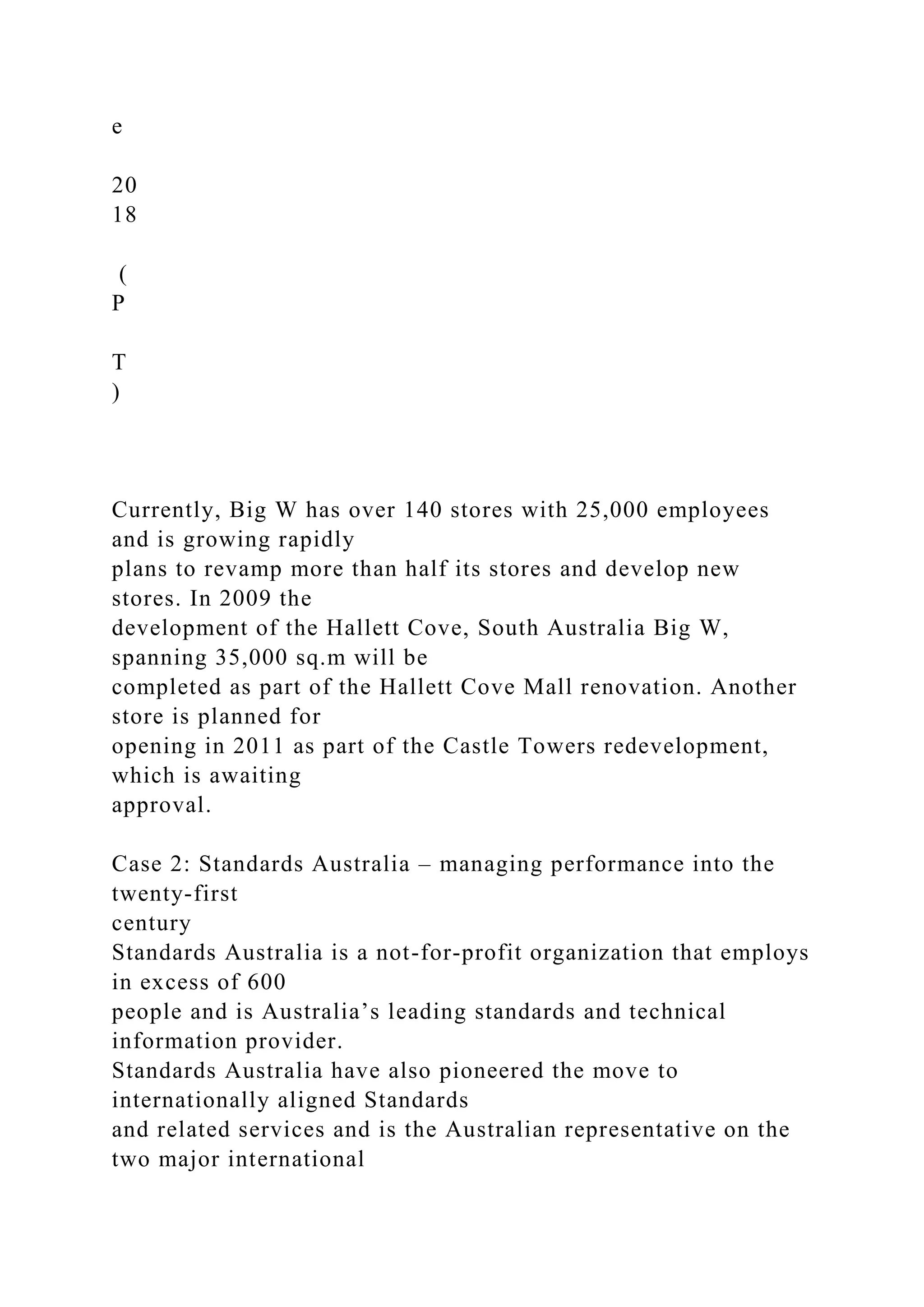
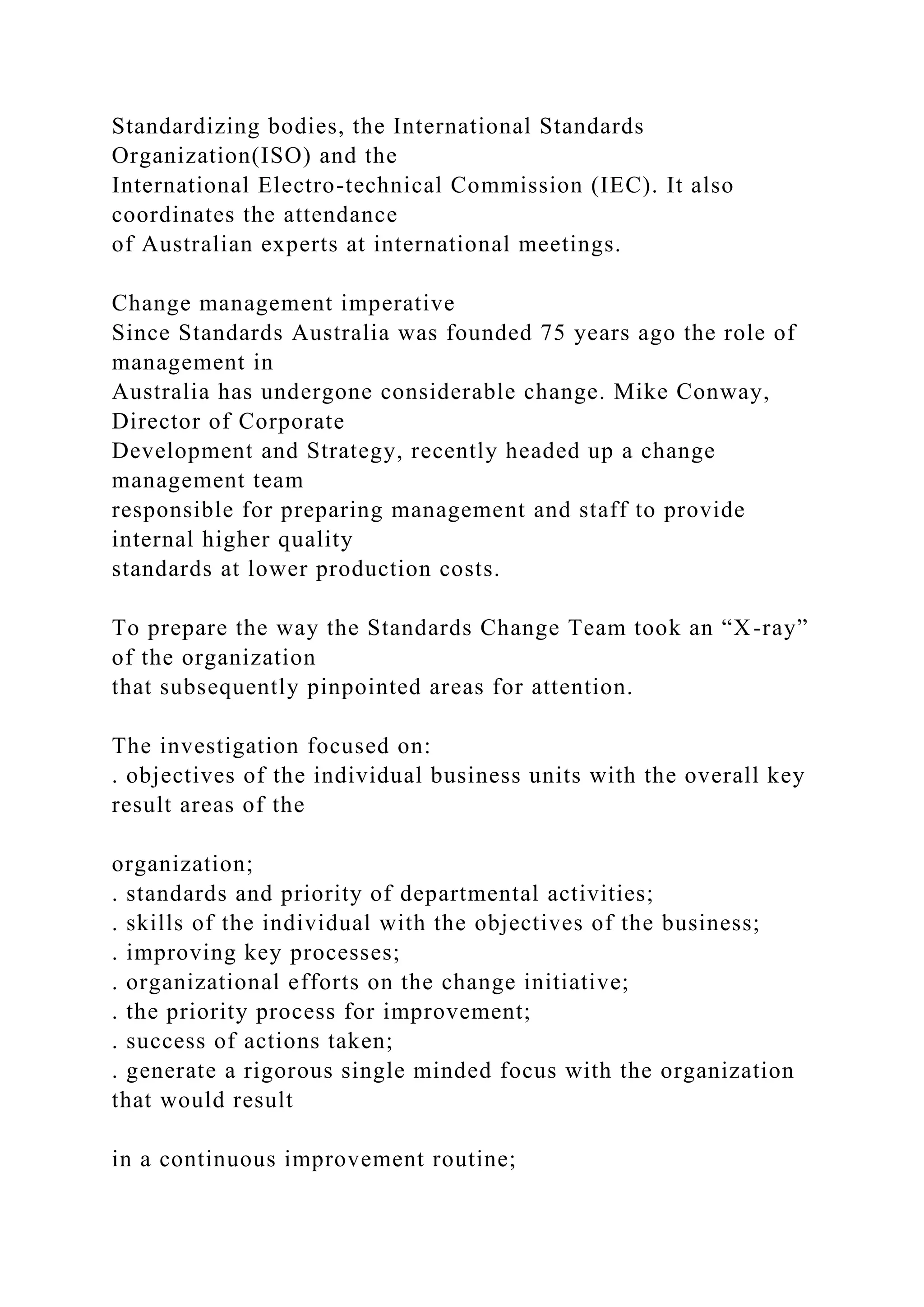
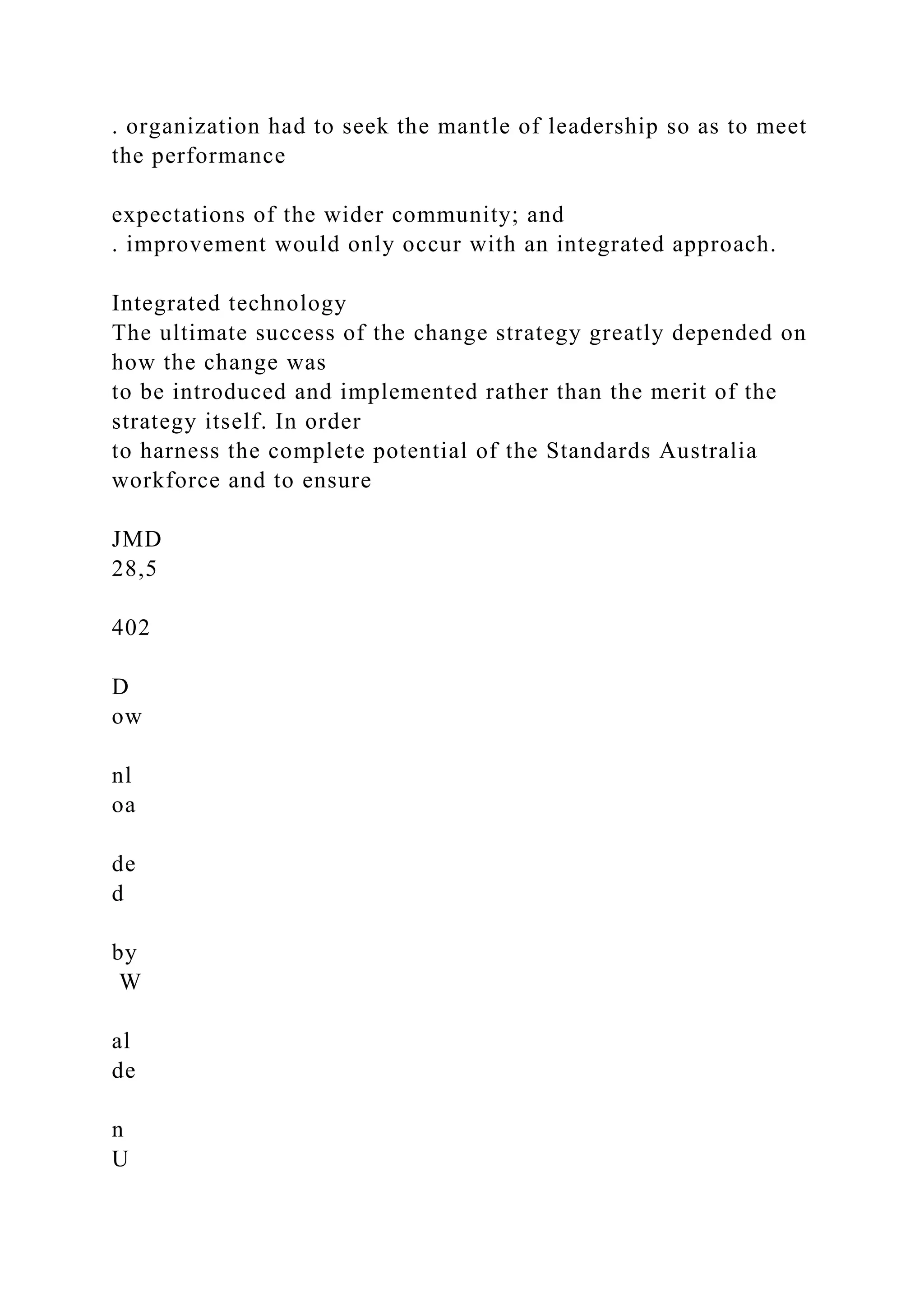


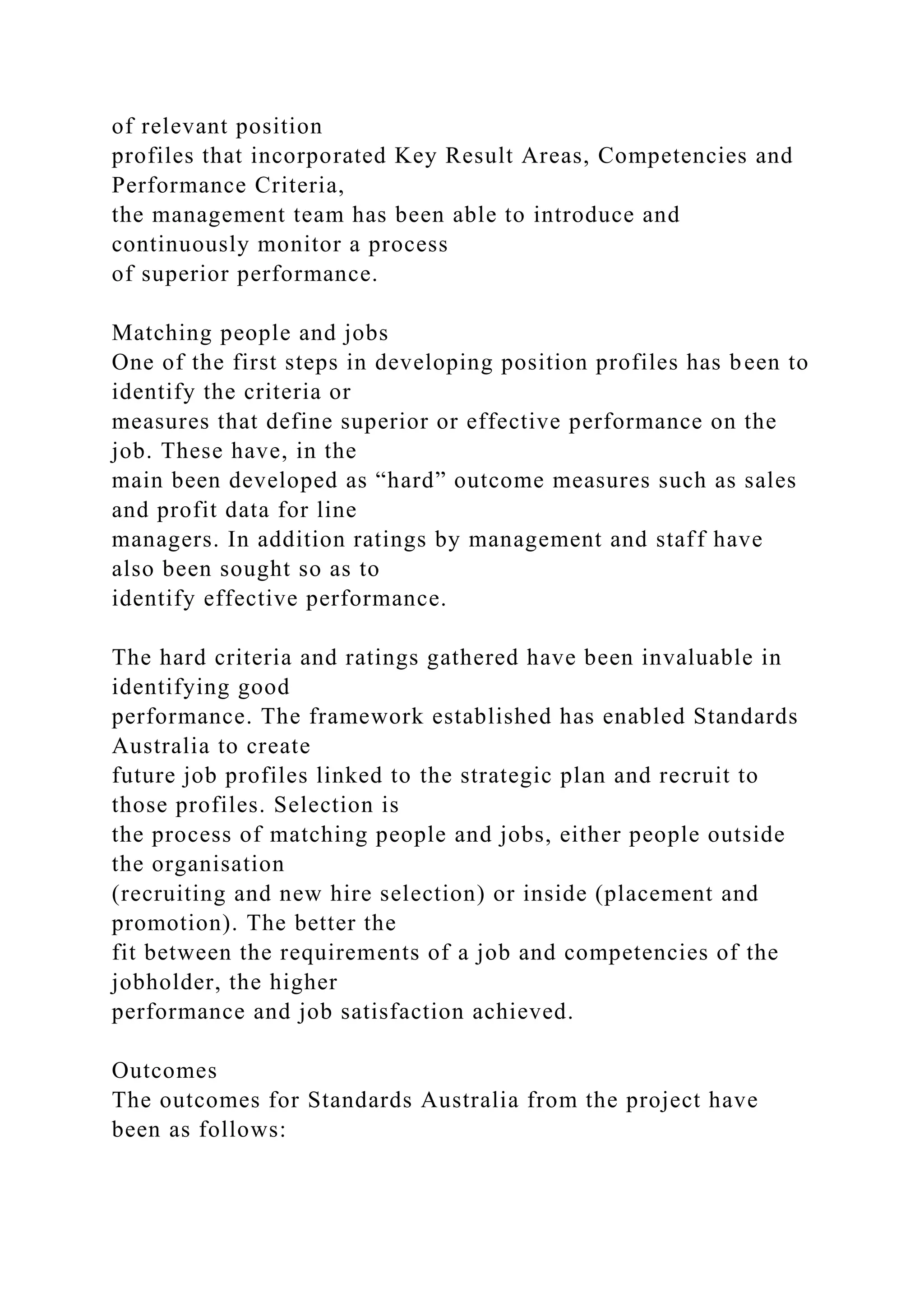
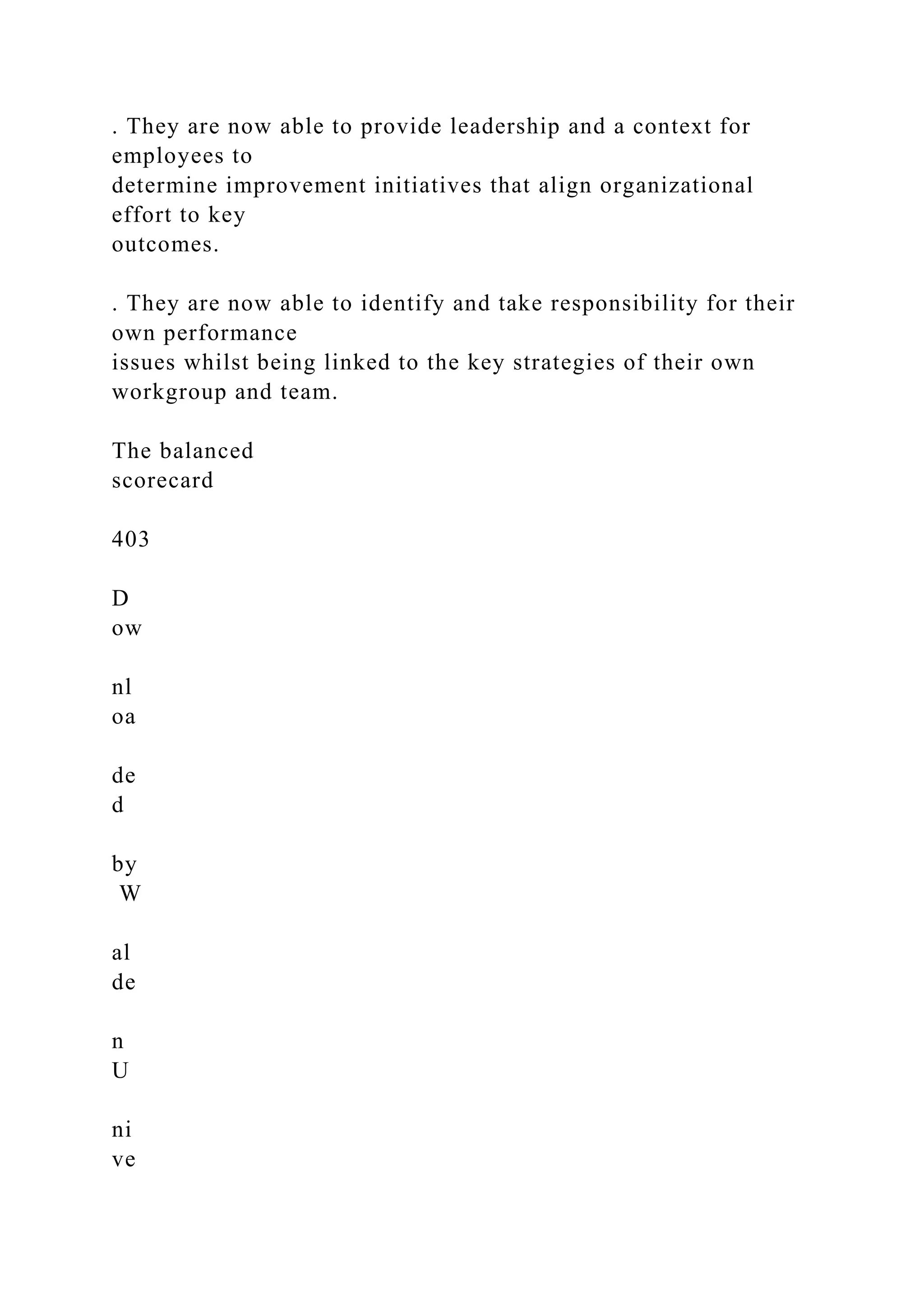
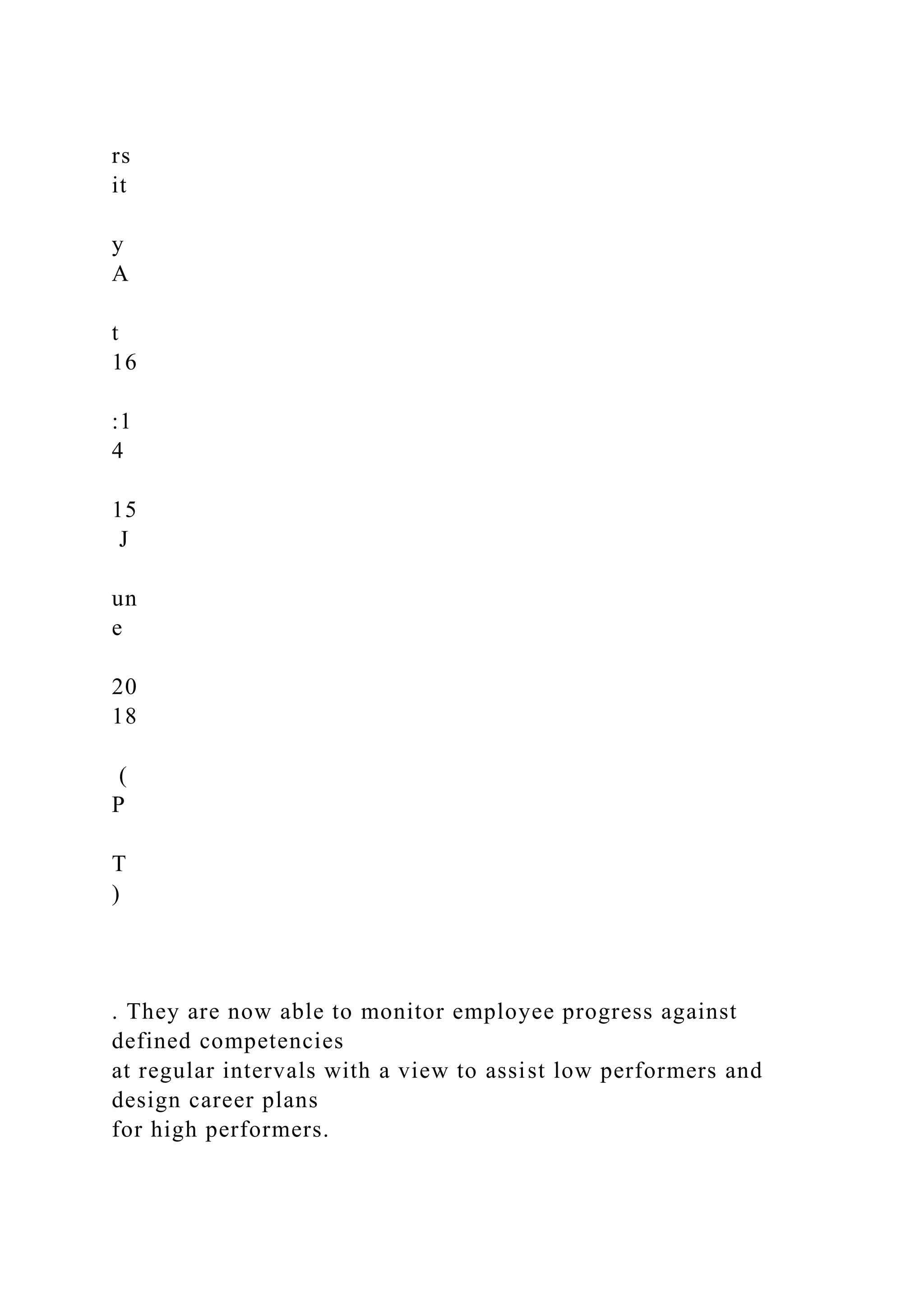

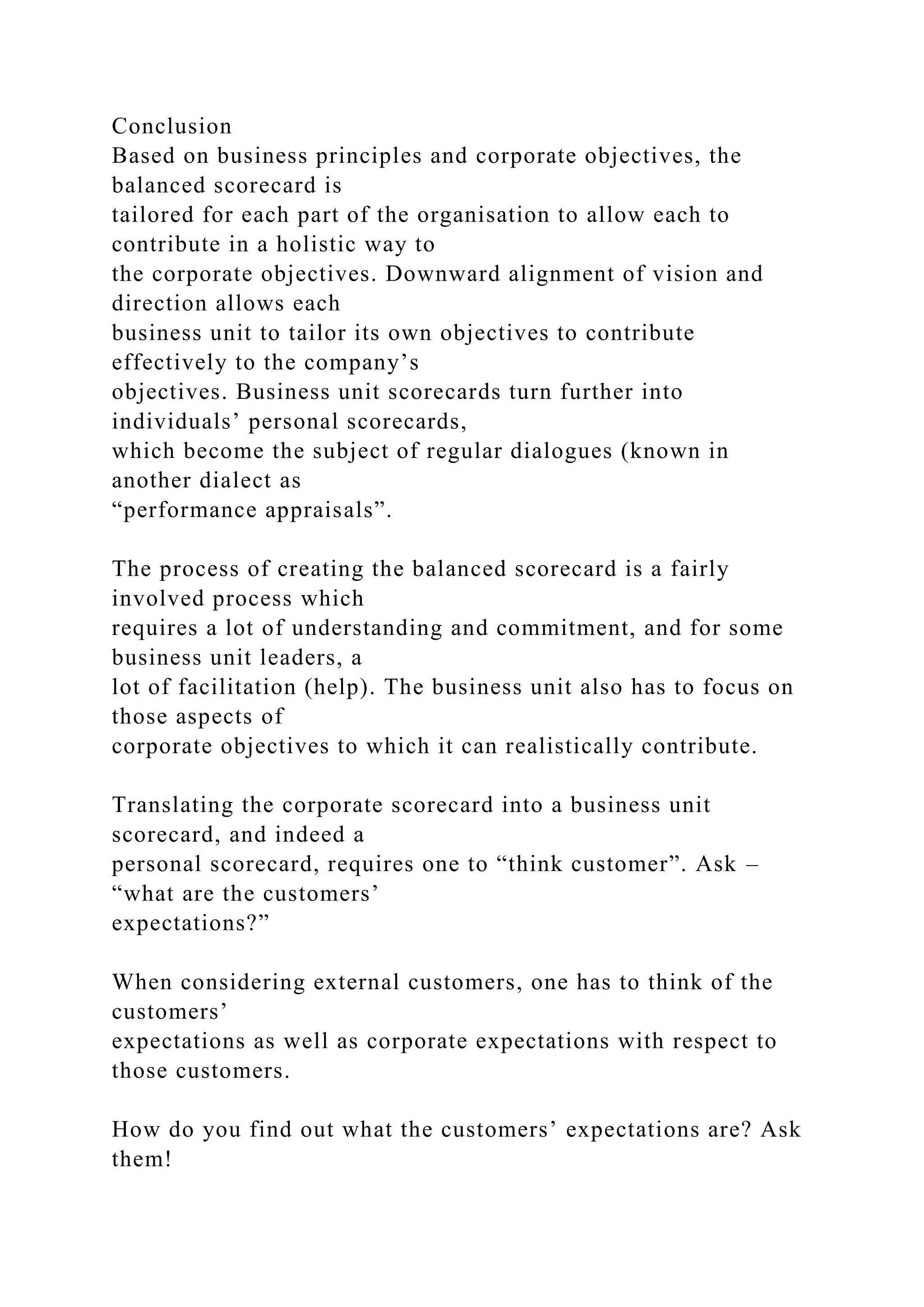
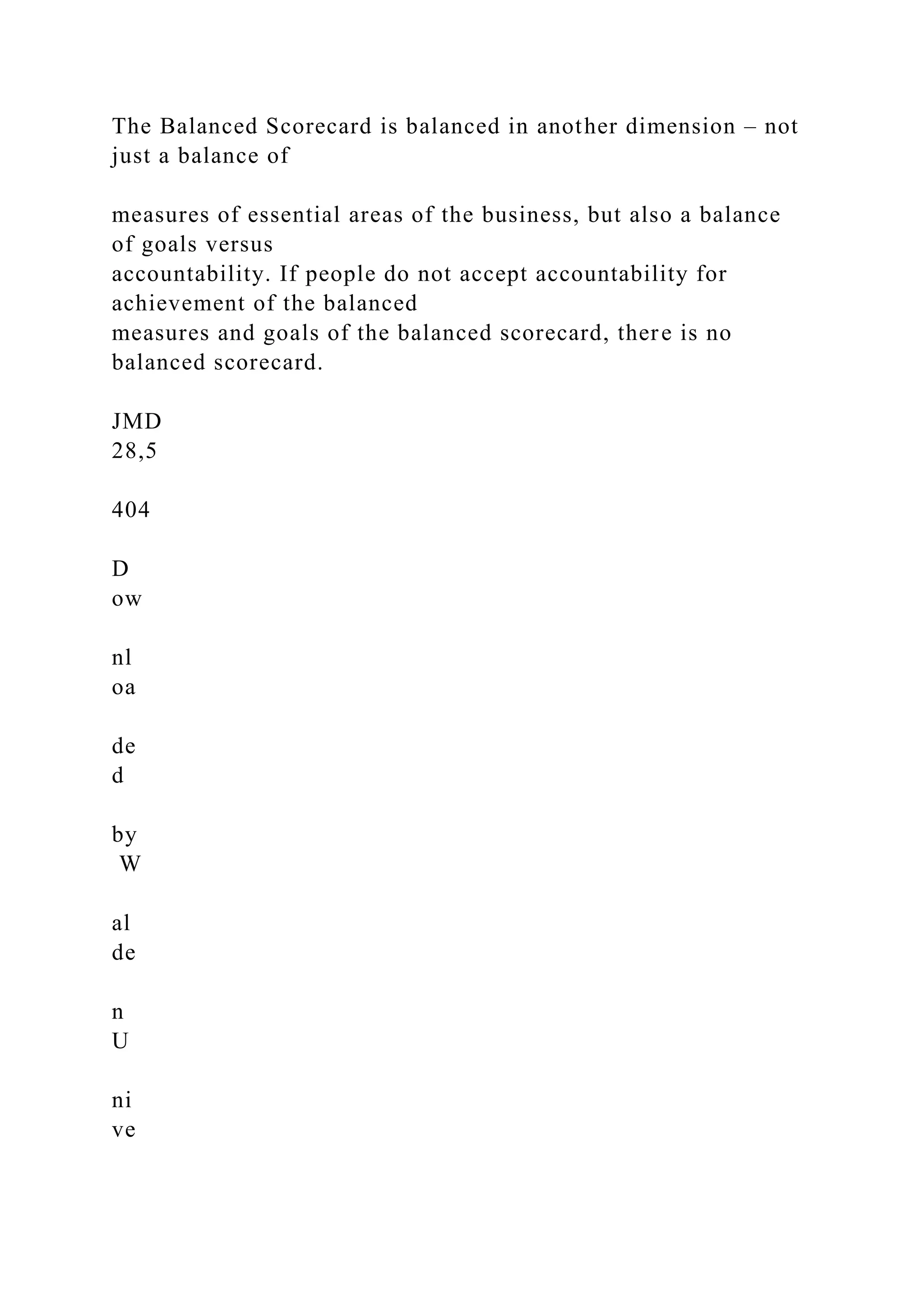
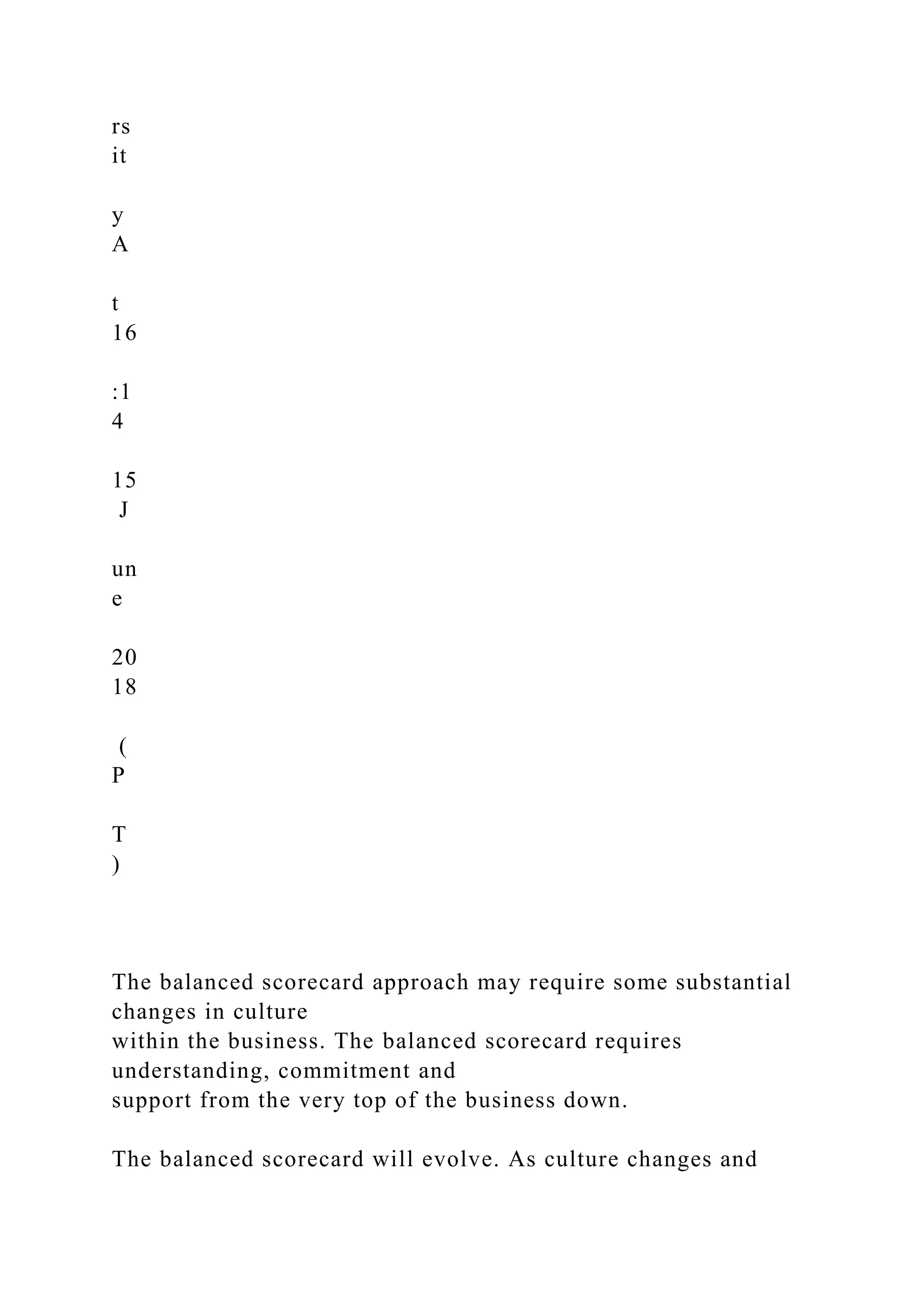

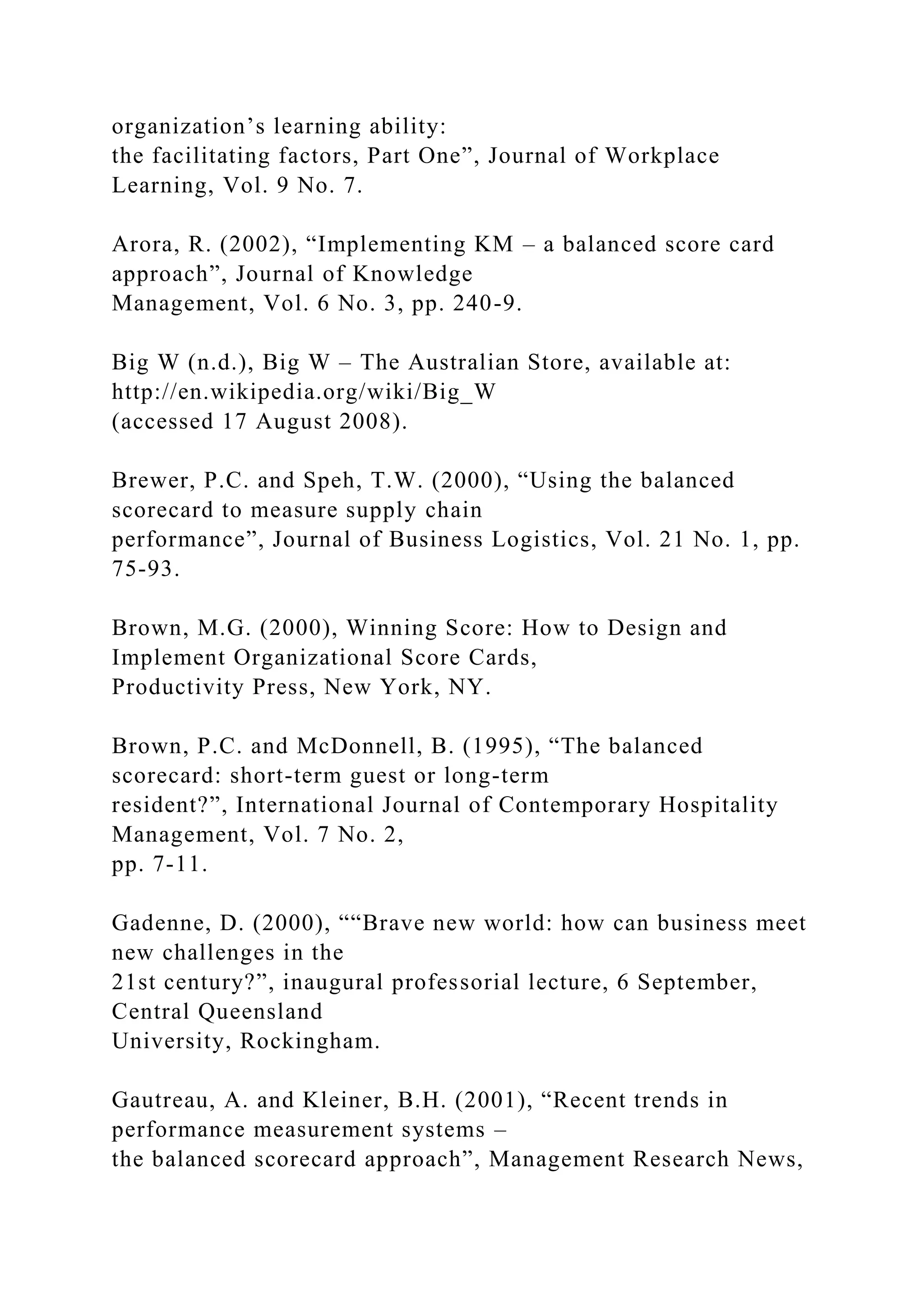
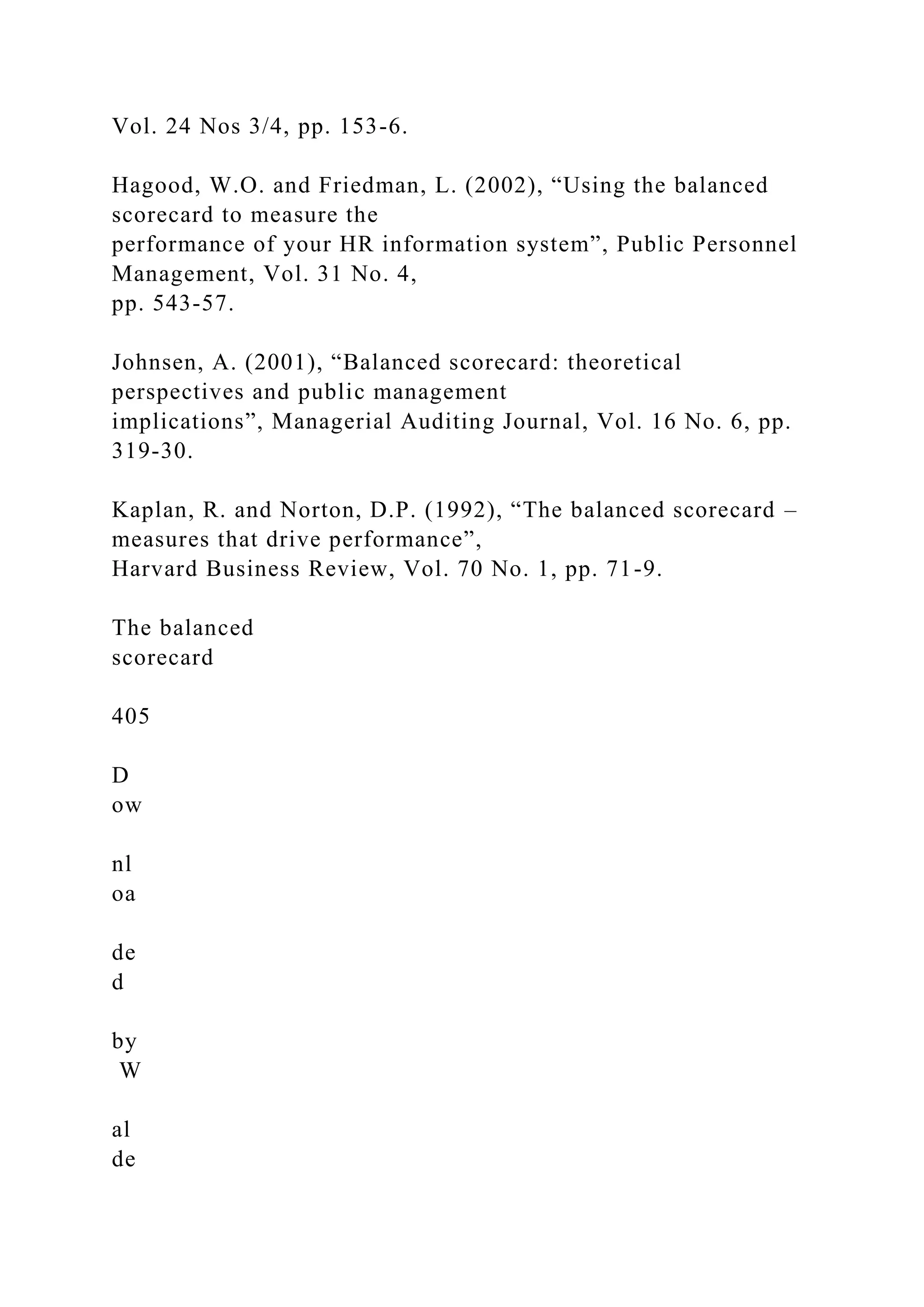
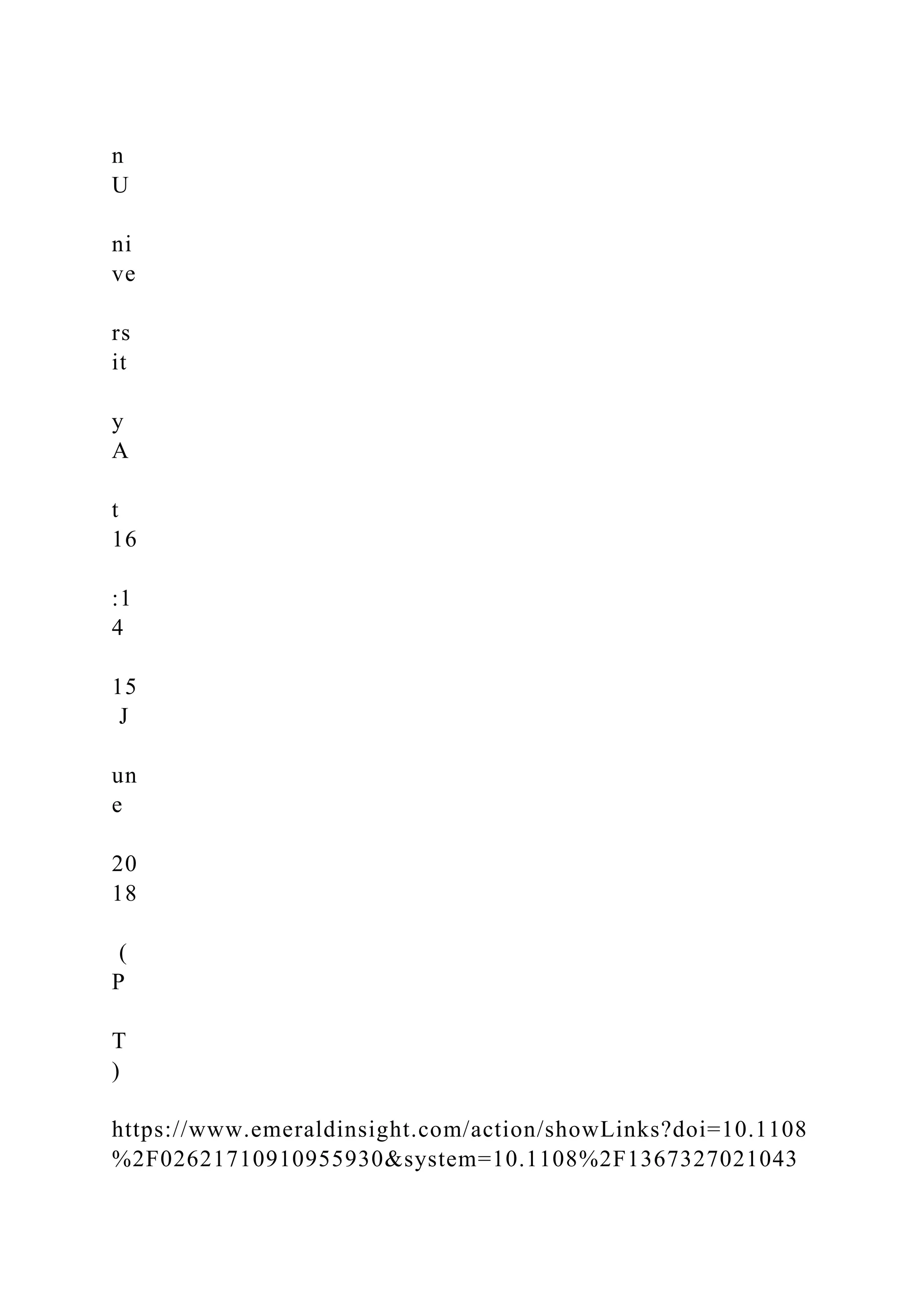

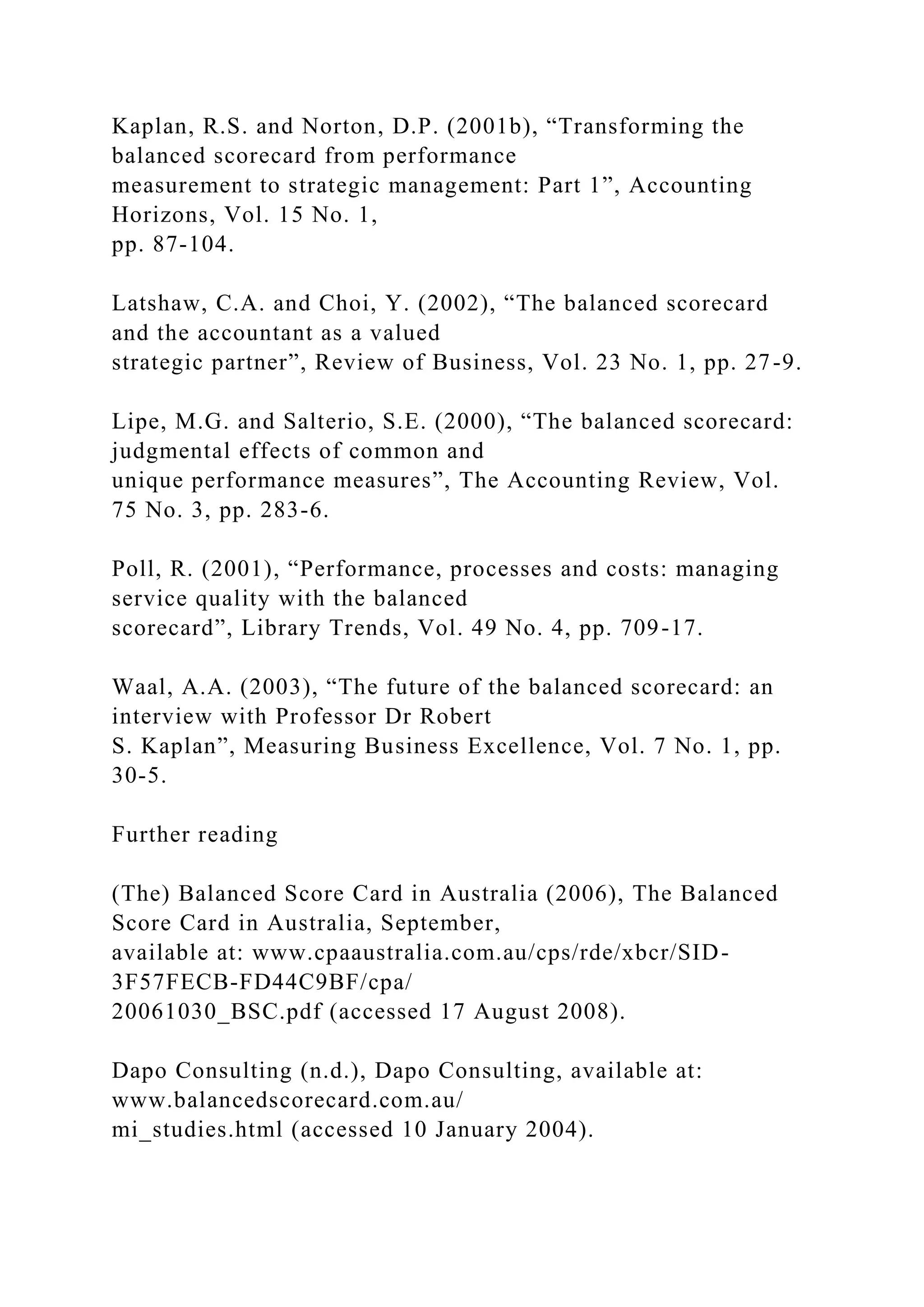
![Sim, K.L. and Koh, H.C. (2001), “Balanced scorecard: a rising
trend in strategic performance
measurement”, Measuring Business Excellence, Vol. 5 No. 2,
pp. 18-26.
Corresponding author
Meena Chavan can be contacted at: [email protected]
JMD
28,5
406
To purchase reprints of this article please e-mail:
[email protected]
Or visit our web site for further details:
www.emeraldinsight.com/reprints
D
ow
nl
oa
de
d
by
W
al
de
n
U
ni](https://image.slidesharecdn.com/appendixchrbalancedscorecardmetricnameofmetricform-221112092958-230b1875/75/Appendix-CHR-Balanced-Score-CardMetric-Name-of-Metric-Form-docx-59-2048.jpg)
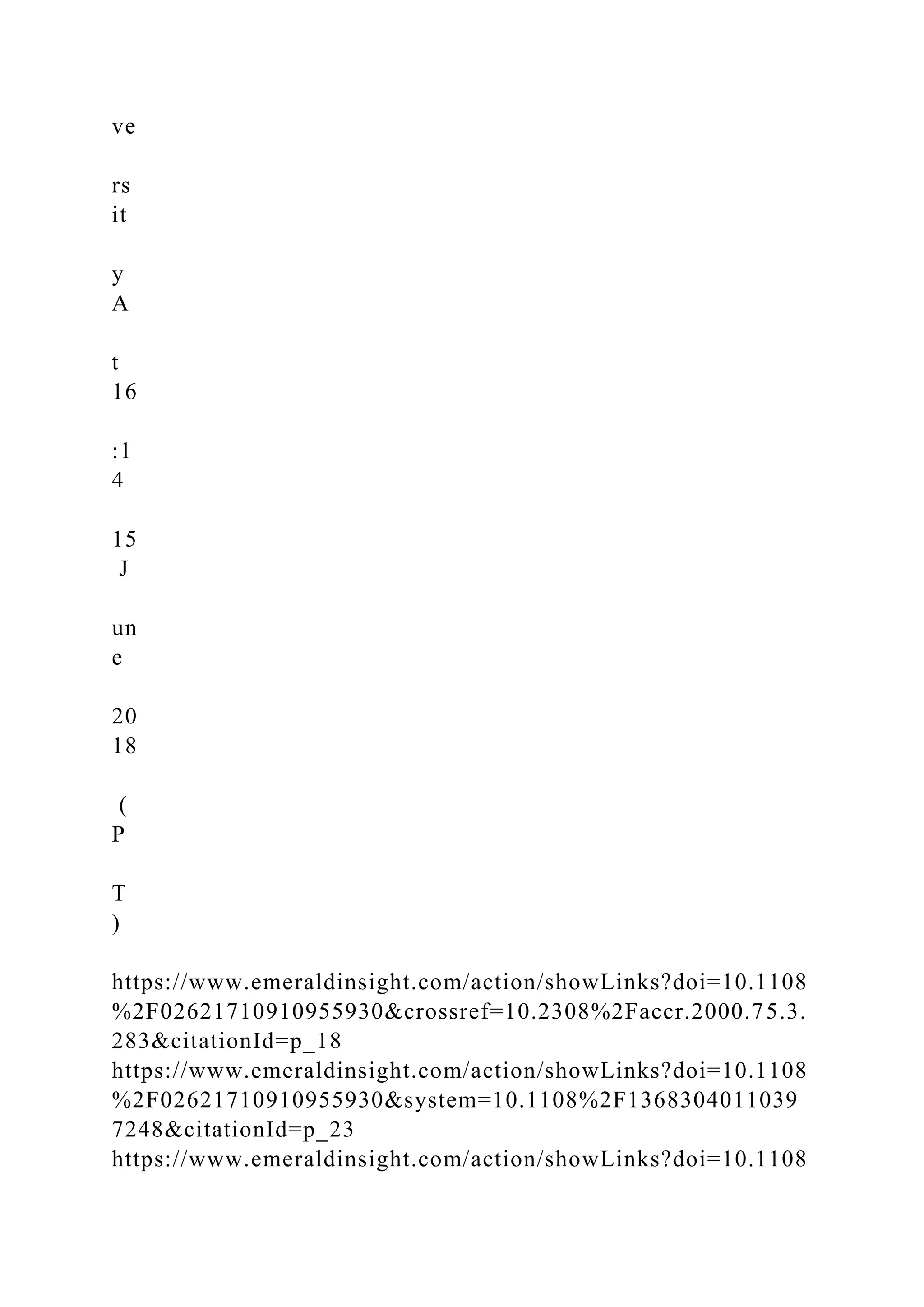
![%2F02621710910955930&system=10.1108%2F1368304031046
6708&citationId=p_20
https://www.emeraldinsight.com/action/showLinks?doi=10.1108
%2F02621710910955930&crossref=10.2307%2F41165876&cita
tionId=p_14
https://www.emeraldinsight.com/action/showLinks?doi=10.1108
%2F02621710910955930&crossref=10.2307%2F41165876&cita
tionId=p_14
https://www.emeraldinsight.com/action/showLinks?doi=10.1108
%2F02621710910955930&crossref=10.2308%2Facch.2001.15.1.
87&citationId=p_16
This article has been cited by:
1. HamidNurdjannah, Nurdjannah Hamid. 2018. Use balanced
scorecard for measuring competitive
advantage of infrastructure assets of state-owned ports in
Indonesia. Journal of Management Development
37:2, 114-126. [Abstract] [Full Text] [PDF]
2. RedaNigusse W., Nigusse W. Reda. 2017. Balanced scorecard
in higher education institutions. Quality
Assurance in Education 25:4, 489-499. [Abstract] [Full Text]
[PDF]
3. KumarRavinder, Ravinder Kumar, Kumar SinghRajesh,
Rajesh Kumar Singh. 2017. Coordination and
responsiveness issues in SME supply chains: a review.
Benchmarking: An International Journal 24:3,
635-650. [Abstract] [Full Text] [PDF]
4. Hourneaux JrFlavio, Flavio Hourneaux Jr, Carneiro-da-
CunhaJulio Araujo, Julio Araujo Carneiro-da-
Cunha, CorrêaHamilton Luiz, Hamilton Luiz Corrêa. 2017.
Performance measurement and management](https://image.slidesharecdn.com/appendixchrbalancedscorecardmetricnameofmetricform-221112092958-230b1875/75/Appendix-CHR-Balanced-Score-CardMetric-Name-of-Metric-Form-docx-61-2048.jpg)
![systems. Managerial Auditing Journal 32:2, 148-166. [Abstract]
[Full Text] [PDF]
5. Mohammed Mesabbah, Amr Arisha. 2016. Performance
management of the public healthcare services in
Ireland: a review. International Journal of Health Care Quality
Assurance 29:2, 209-235. [Abstract] [Full
Text] [PDF]
6. Jaakko Nuutila, Sirpa Kurppa. 2016. The Finnish organic
food chain—an activity theory approach.
Organic Agriculture 6:1, 49-56. [Crossref]
7. Theognosia Tellidou, Chris Grose, Persefoni Polychronidou,
Theodore Kargidis, Stergios Anatolitis.
2016. Corporate Governance for A.S.E. Listed Firms. Scientific
Annals of Economics and Business 63:1. .
[Crossref]
8. James Kamwachale Khomba. 2015. Conceptualisation of the
Balanced Scorecard (BSC) model.
International Journal of Commerce and Management 25:4, 424-
441. [Abstract] [Full Text] [PDF]
9. Heather Nachtmann, Terry Collins, Justin R. Chimka,
Jingjing Tong. 2015. Development of a balanced
scorecard for flight line maintenance activities. Journal of
Quality in Maintenance Engineering 21:4,
436-455. [Abstract] [Full Text] [PDF]
10. Antônio André Cunha Callado, Lisa Jack. 2015. Balanced
scorecard metrics and specific supply chain
roles. International Journal of Productivity and Performance
Management 64:2, 288-300. [Abstract] [Full
Text] [PDF]](https://image.slidesharecdn.com/appendixchrbalancedscorecardmetricnameofmetricform-221112092958-230b1875/75/Appendix-CHR-Balanced-Score-CardMetric-Name-of-Metric-Form-docx-62-2048.jpg)
![11. Fawzy Soliman. Could Cloud Systems Drive Sustainable
Competitive Advantages in Supply—Demand
Chains? 11-35. [Crossref]
12. A.M. Casado, J.I. Peláez. 2014. Intangible management
monitors and tools: Reviews. Expert Systems with
Applications 41:4, 1509-1529. [Crossref]
13. Sarah M. Passonneau. 2013. Library assessment activities.
Performance Measurement and Metrics 14:3,
175-196. [Abstract] [Full Text] [PDF]
14. Mattias Elg, Klara Palmberg Broryd, Beata Kollberg. 2013.
Performance measurement to drive
improvements in healthcare practice. International Journal of
Operations & Production Management
33:11/12, 1623-1651. [Abstract] [Full Text] [PDF]
15. A. Y. A. Upadhyay, A. K. Upadhyay, S. Palo. 2013.
Strategy Implementation Using Balanced Scorecard:
Achieving Success through Personal Values of Leaders and
Employees. Management and Labour Studies
38:4, 447-469. [Crossref]
16. Archana Yemeshvary Ashok Upadhyay, Sasmita Palo. 2013.
Engaging employees through balanced
scorecard implementation. Strategic HR Review 12:6, 302-307.
[Abstract] [Full Text] [PDF]
D
ow
nl
oa
de](https://image.slidesharecdn.com/appendixchrbalancedscorecardmetricnameofmetricform-221112092958-230b1875/75/Appendix-CHR-Balanced-Score-CardMetric-Name-of-Metric-Form-docx-63-2048.jpg)

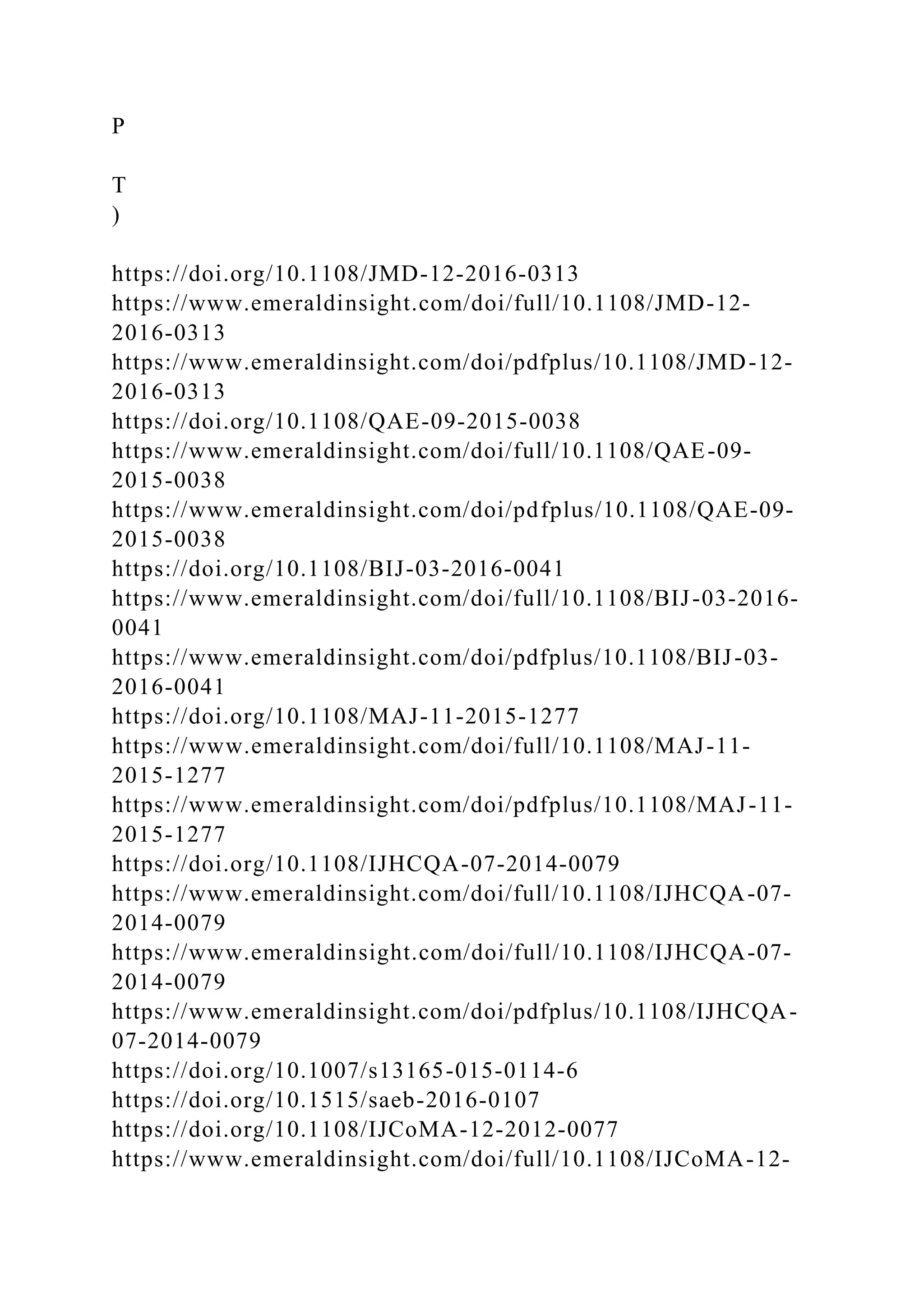

![scorecard and universities. International Journal of
Educational Management 27:3, 203-220. [Abstract] [Full Text]
[PDF]
18. Max Houck, Paul J. Speaker, Arron Scott Fleming, Richard
A. Riley. 2012. The balanced scorecard:
Sustainable performance assessment for forensic laboratories.
Science & Justice 52:4, 209-216. [Crossref]
19. Luu Trong Tuan. 2012. From unbalanced to balanced:
performance measures in a Vietnamese hospital.
Leadership in Health Services 25:4, 288-305. [Abstract] [Full
Text] [PDF]
20. Amik Garg, S.G. Deshmukh. 2012. Designing balanced
scorecard for multi echelon repair inventory
systems. Journal of Modelling in Management 7:1, 59-96.
[Abstract] [Full Text] [PDF]
21. Beata Kollberg, Mattias Elg. 2011. The practice of the
Balanced Scorecard in health care services.
International Journal of Productivity and Performance
Management 60:5, 427-445. [Abstract] [Full Text]
[PDF]
22. Gero Weimer, Stefan Seuring. 2009. Performance
measurement in business process outsourcing decisions.
Strategic Outsourcing: An International Journal 2:3, 275-292.
[Abstract] [Full Text] [PDF]
23. Salwa Alhamoudi. Knowledge Management Strategies 184-
194. [Crossref]
24. Salwa Alhamoudi. Knowledge Management Strategies 857-
867. [Crossref]
25. Josiah Edmond, Fawzy Soliman. The Impact of Balance
Score Card Implementation on Supply Chain](https://image.slidesharecdn.com/appendixchrbalancedscorecardmetricnameofmetricform-221112092958-230b1875/75/Appendix-CHR-Balanced-Score-CardMetric-Name-of-Metric-Form-docx-67-2048.jpg)
![Firms 557-575. [Crossref]
26. Josiah Edmond, Fawzy Soliman. The Impact of Balance
Score Card Implementation on Supply Chain
Firms 240-257. [Crossref]
D
ow
nl
oa
de
d
by
W
al
de
n
U
ni
ve
rs
it
y
A
t
16](https://image.slidesharecdn.com/appendixchrbalancedscorecardmetricnameofmetricform-221112092958-230b1875/75/Appendix-CHR-Balanced-Score-CardMetric-Name-of-Metric-Form-docx-68-2048.jpg)

